After spending over a month in Peru and trekking for 9 days to reach Machu Picchu, we visit Bolivia, specifically La Paz, to visit the mythical Lake Titicaca and its famous Isla del Sol! Ready for a guided tour?
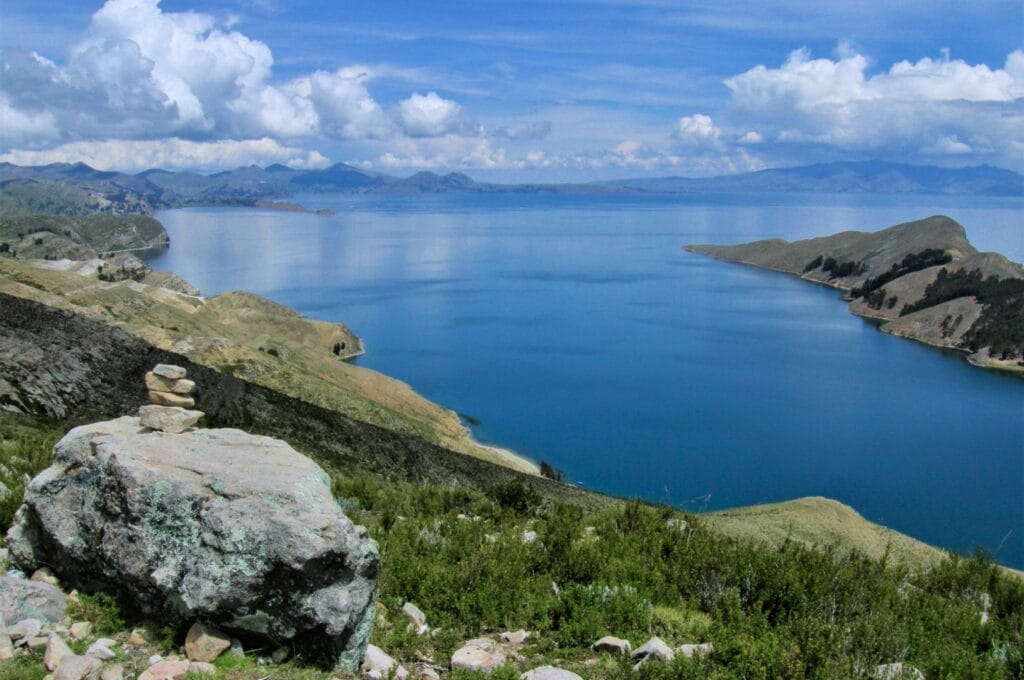
We took this trip in 2014, but the article was completely revised and updated in May 2024. If you see any price changes or have additional information that might be relevant, please feel free to leave us a comment!
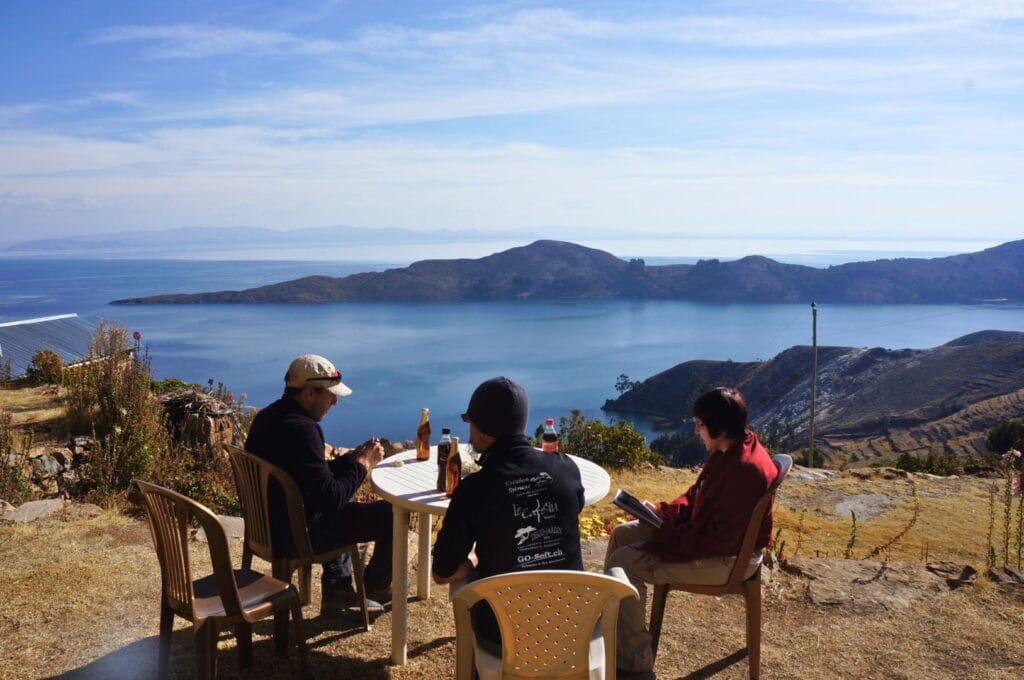
The border crossing between Peru and Bolivia and reunion
From Peru, we took a bus to Cusco to arrive in La Paz. Crossing the border at Desaguadero went very smoothly, it was quick, and there were no problems! We got off the bus, showed our passports at the Peruvian border post before joining the Bolivian border post a few meters away. Then, back on the bus! We could have taken a direct bus to Copacabana, but arriving in Bolivia marked the reunion with my parents and the opportunity and acclimatize to avoid altitude sickness.
After over a year of traveling, family moments are always something great. We were really looking forward to this moment! Especially since before our trip around the world, we had worked for 2 years in Vienna, so we hadn’t seen each other much. After the red wine, cheese from Bagnes, and dried meat brought by my parents from Switzerland, we stayed a few days in La Paz to acclimatize. (Believe me, cheese feels good after over a year abroad!)
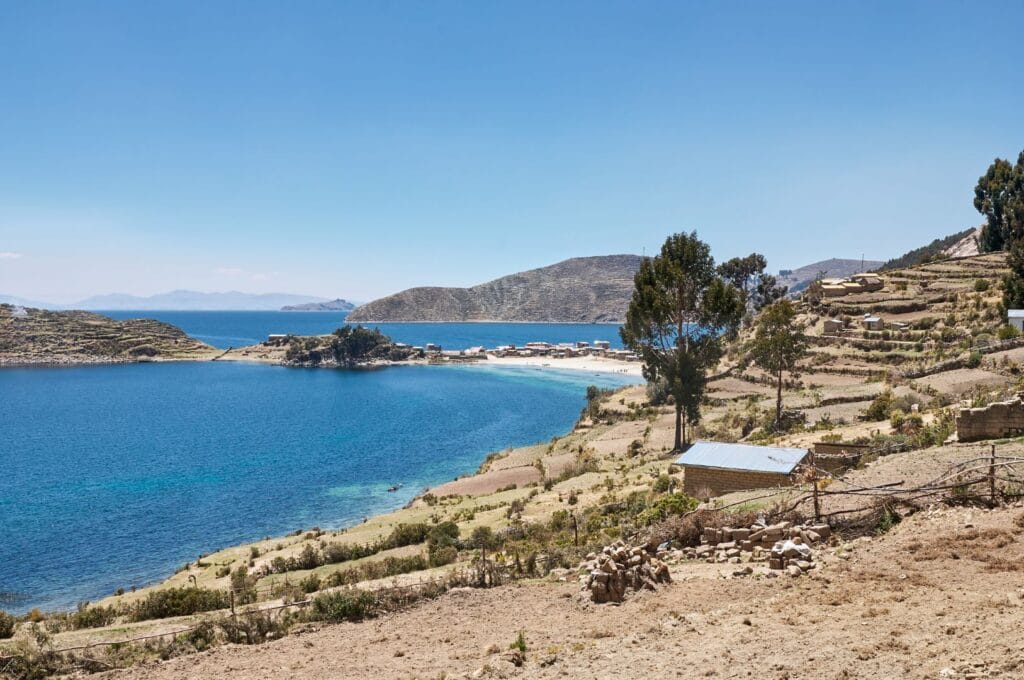
Acclimatization in La Paz is essential, this (administrative) capital is practically at 4000 m altitude, making it the highest in the world! My parents were coming from nearly 0 m altitude. Needless to say, the shock was rough! After a few days, we decided to go and discover Lake Titicaca and its famous Isla del Sol (Island of the Sun). We had heard a lot about the sunsets and the breathtaking view of the Cordillera Real that can be seen from this little Bolivian island. In short, these arguments immediately convinced my parents!
To cover the 650 km between Cusco and La Paz, it’s ideal to take a night bus. The journey takes between 15 and 18 hours, so you’ll save a night. Choose a cama bus for better comfort with seats that recline to 140°. Tickets start at 100 soles (26 dollars), and some companies like Transzela offer higher-end services (meals, TV, blankets…) for a logically higher price, around 42 dollars each. There are quite a few flights between Cusco and La Paz, but it’s much more expensive than the bus: tickets cost a minimum of 100 dollars per person…
Introduction to Lake Titicaca
Geography
Lake Titicaca is a must-visit if you’re traveling through Peru or Bolivia since the border between these two countries passes through or near it. To be exact, about 56% of its surface is on the Peruvian side… We chose to visit the Bolivian part due to my parents’ visit to La Paz.
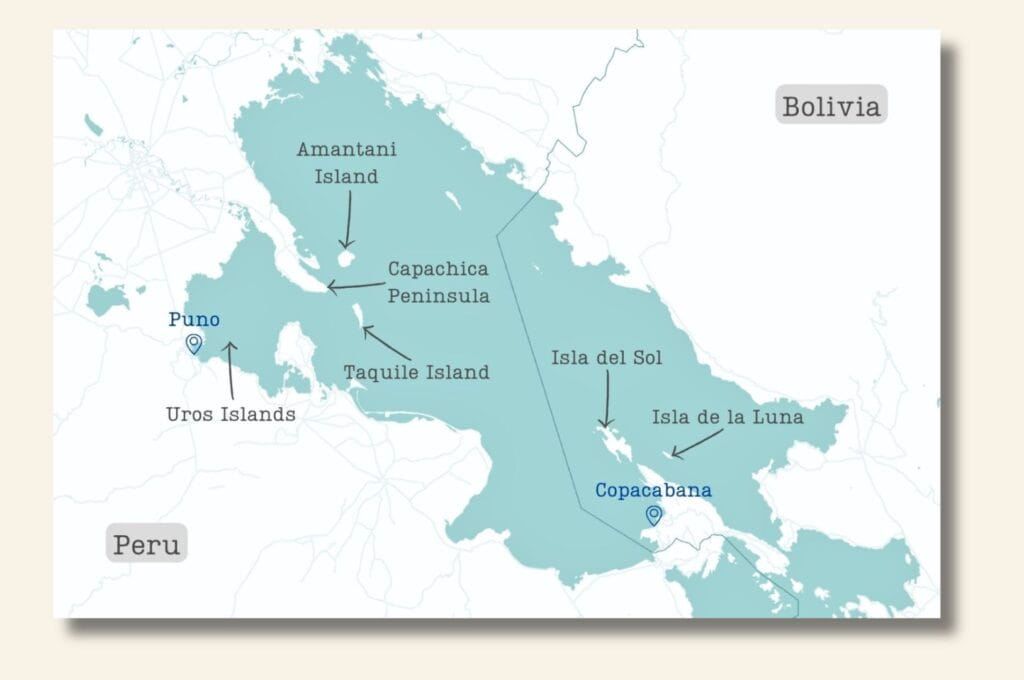
As a reminder, Lake Titicaca is the largest freshwater lake in South America by volume and the highest navigable lake in the world, reaching over 3800 m in altitude! It is located in the heart of the Altiplano, a high plateau of the Andes that extends over Argentina, Chile, Peru, and Bolivia, of course. Its average depth is 107 meters and reaches up to 327 meters! And due to its size, the lake experiences tides.
What interests us today are its islands. Indeed, Lake Titicaca has more than 40 islands, and the largest is the famous Island of the Sun (Isla del Sol). We spent 1 night there and can only recommend it. Find all the other islands and activities of Lake Titicaca here.
Civilizations and legends around the name
Lake Titicaca is considered the cradle of Inca civilization and played an important role for 3 pre-Inca civilizations: the Tiwanakus, the Aymaras, and the Uros. To understand this, let’s go back to the origin of its name, which is still uncertain.
Some mention the translation of “stone puma” (titi means puma and kjarka, stone) following the vengeance of the mountain gods. We explain. These deities forbade the men of the valley to climb the mountains. But the devil decided otherwise, urging them to seek the sacred fire at the top of the mountains. Furious, the gods unleashed pumas on the men of the valley. The Sun god Inti therefore began to cry at this massacre, which created Lake Titicaca, swept the pumas into the depths, and transformed them into stone statues. The only surviving human couple, Manco Capac and Mama Ocllo, would then have emerged from the lake to create the Inca civilization and its empire in the Cusco Valley.
To learn more, we invite you to read the Wiki page of the lake.
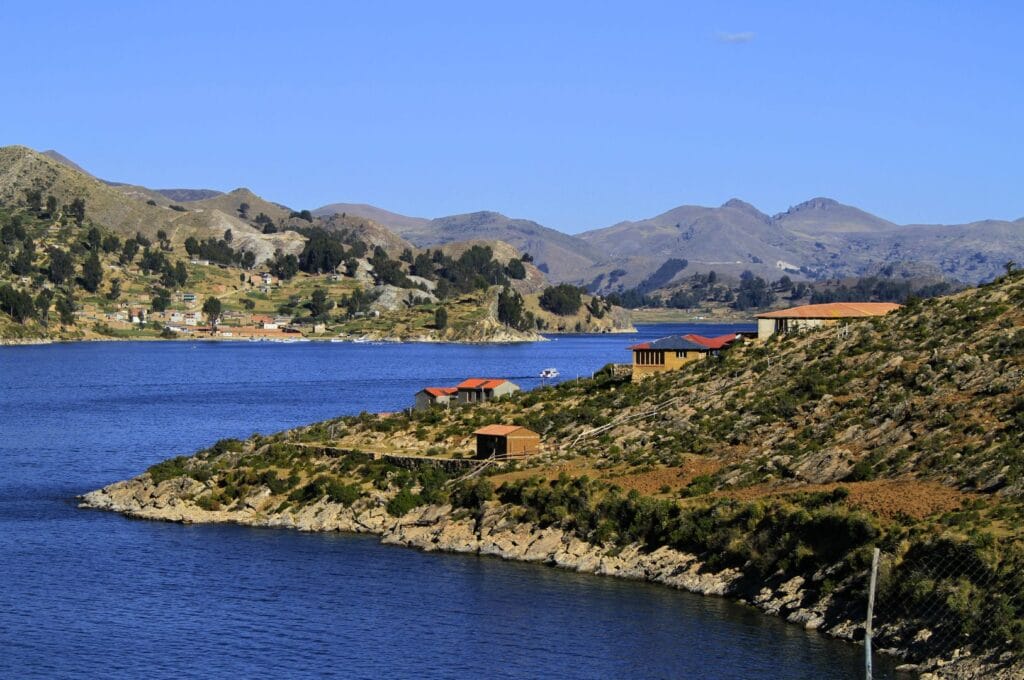
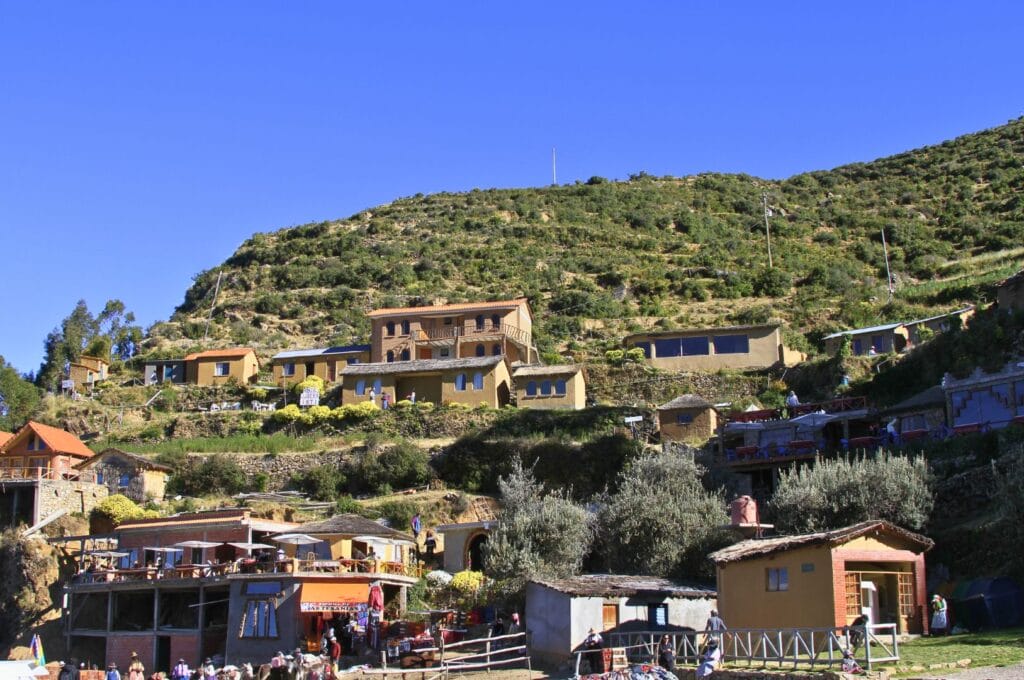
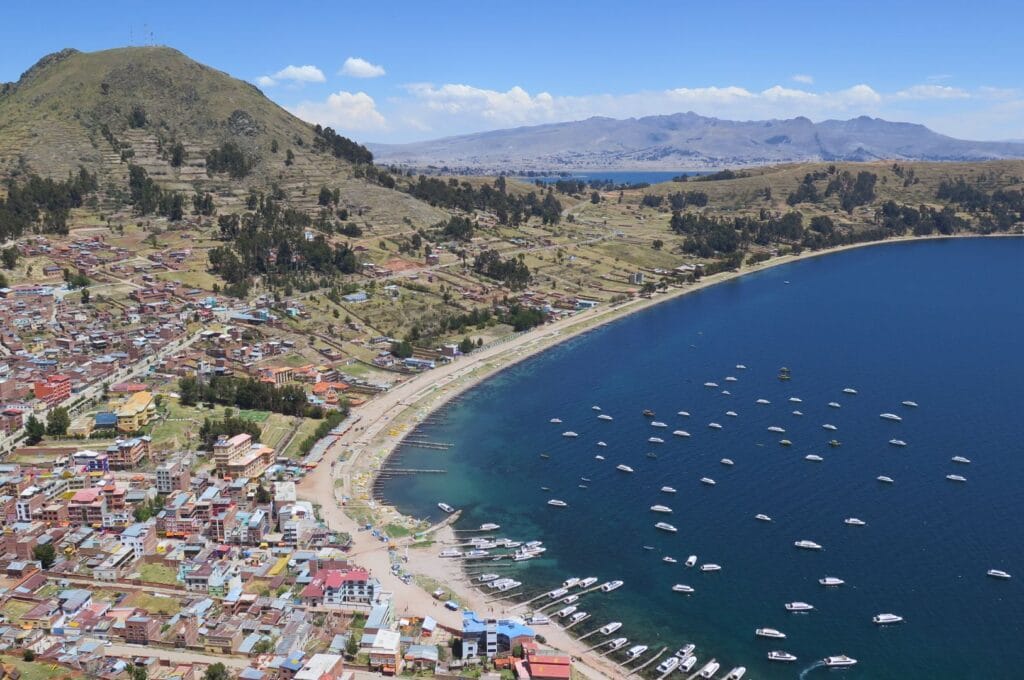
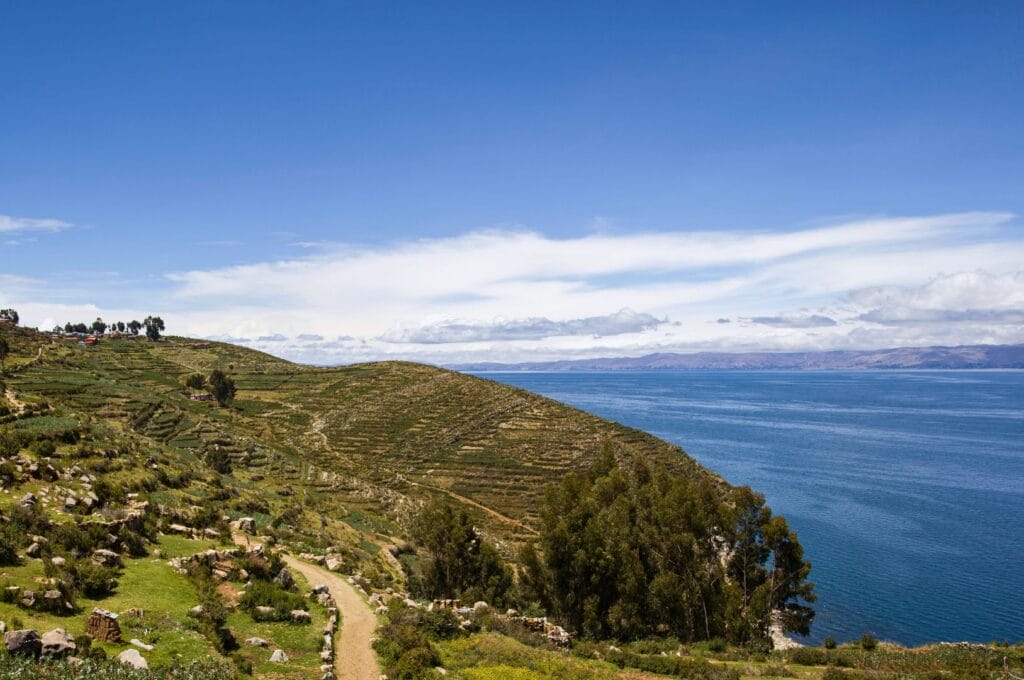
Communities and tourism
More than 3 million people depend on Lake Titicaca for agriculture and livestock farming (sheep, llamas). You will encounter several communities around the lake from civilizations such as the Quechuas, Aymaras… However, we warn you. Part of the islands is clearly geared towards tourism, and everything is well organized: shows, predefined circuits… It’s up to you to decide what you prefer: learning about real daily life by staying with locals or witnessing somewhat inauthentic performances by taking an organized tour by an agency. We’ll talk more about this aspect at the end of the article, and we’ll be presenting the tours we feel are the most authentic.
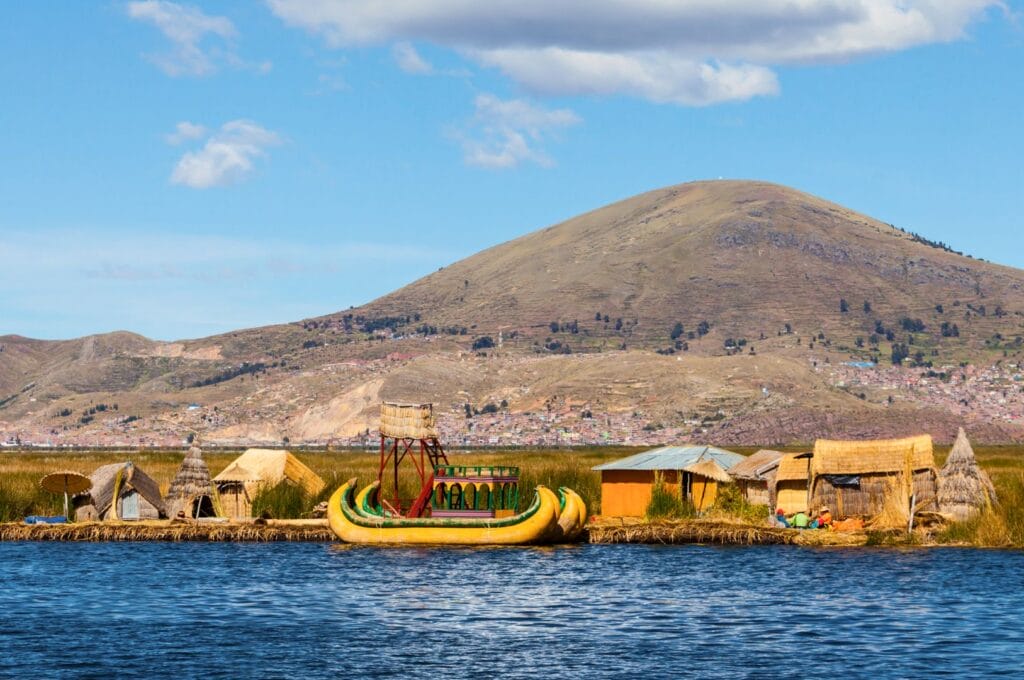
The best time to visit Lake Titicaca
To visit Lake Titicaca and fully enjoy its blue color, the best time is the dry season, between April and October. The peak tourist season is between July and September. The coming off-season is possible, but expect some showers!
In this region of South America, the climate is dry, and the sun is extremely strong around the lake due to the altitude! Don’t forget to bring a hat/cap and sunscreen because the rays are intense at 3812 m altitude! On the contrary, nights are very cool, so bring some warm layers, especially if you’re staying with locals where heating is nonexistent.
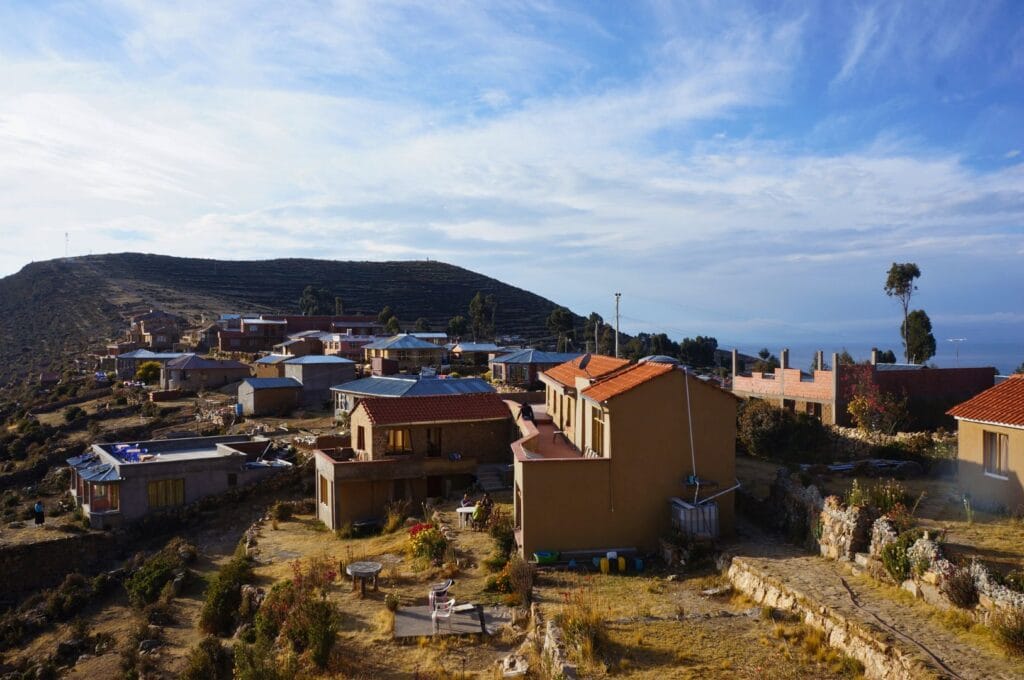
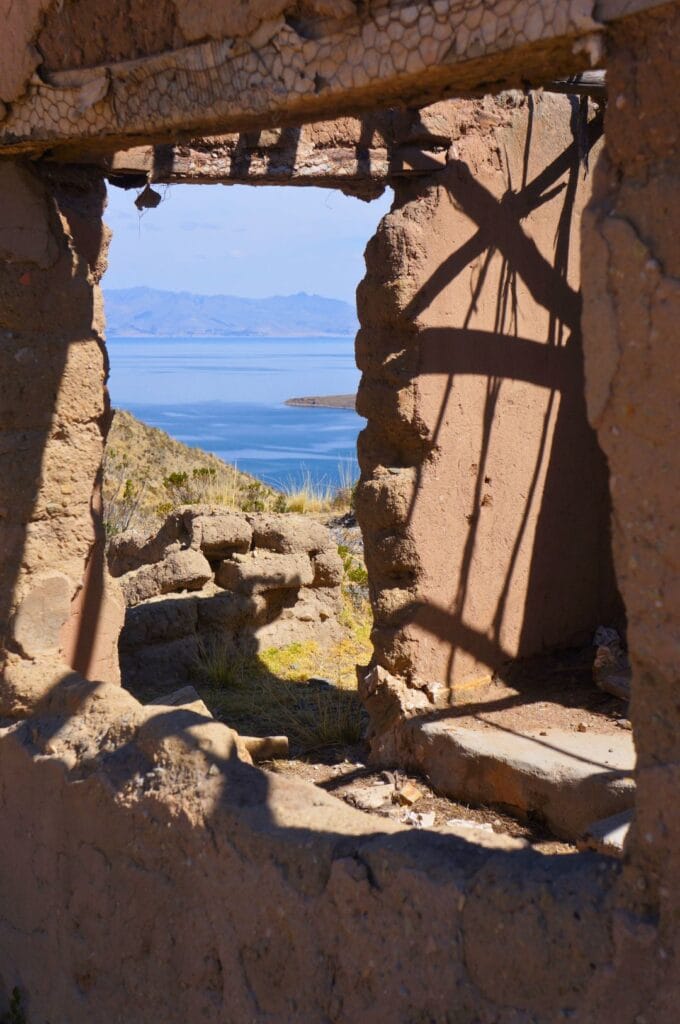
How to get to Lake Titicaca
For the Bolivian part of Lake Titicaca, it’s ideal to do everything from Copacabana (not the Rio beach, of course…). In Peru, all visits to the lake are organized from the city of Puno.
Bolivia side
To reach Lake Titicaca from La Paz, there aren’t 36 solutions. You have to take a bus to the village of Copacabana from one of the city terminals (Terminal De Buses La Paz or Terminal Cementerio). You can choose a large bus (40 bolivianos) or a minibus (30 bolivianos) that goes directly to Copacabana in a 4-hour journey. To book your bus tickets, click here!
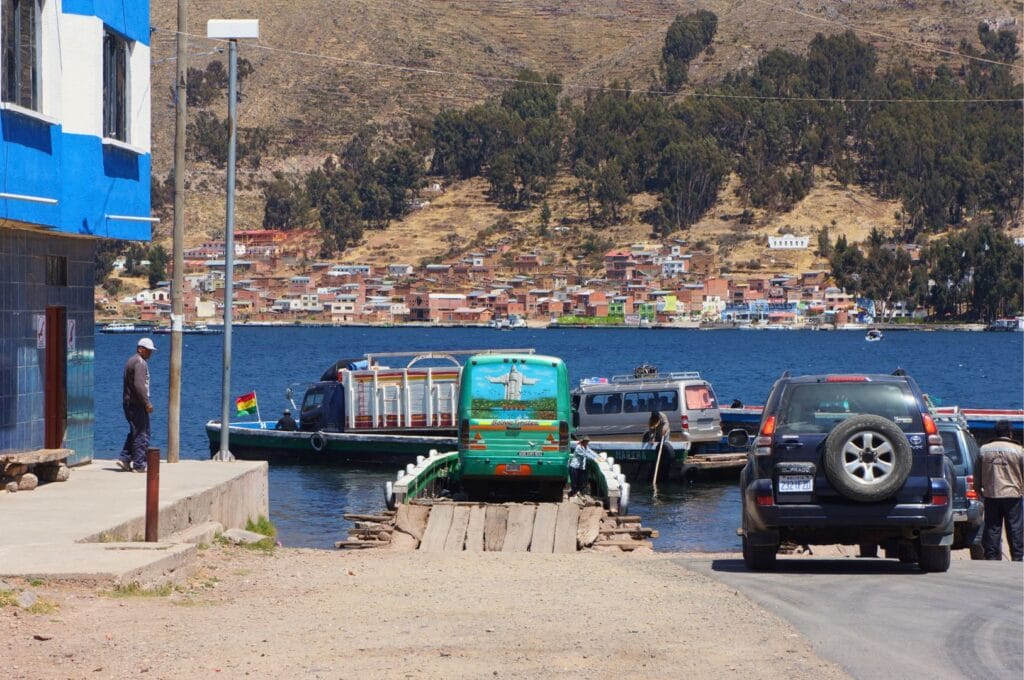
The landscapes are frankly magnificent, and the road is paved all the way. There is a somewhat amusing passage in San Pablo de Tiquina where the bus crosses the strait on a motorized wooden raft. For passengers, you have to get off the bus and take a small boat. It’s a bit more reassuring than the raft used for the bus! The crossing fee is 2 bolivianos per person.
Some agencies offer an organized day in Copacabana and on the Island of the Sun from La Paz, but you will spend most of your time in transport. We advise you to opt for 2 days from La Paz or to go on your own, staying 1 night in Copacabana and 1 night in Isla del Sol. You have the option of visiting the Bolivian side of Lake Titicaca and Isla del Sol from Puno via this organized day tour. Everything is included in the price: transportation, meals, entrance fee to the island, etc.
You can perfectly visit both sides of Lake Titicaca by going to both Copacabana and Puno. Bolivia Hop is perfect for this: you choose your departure and arrival cities, your stops, and the duration of the stay. All combinations are possible on both sides of the border for very reasonable prices. For an even freer version, check out the buses that run from Puno to Copacabana and those that run in the opposite direction.
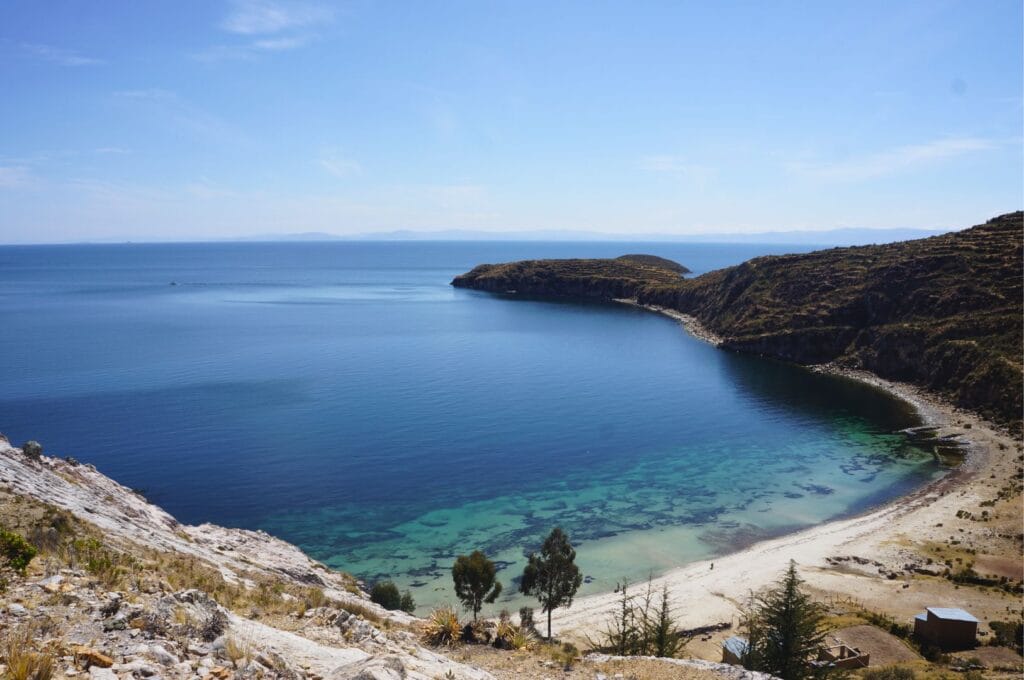
Peru side
Puno is the gateway to all activities on the Peruvian side of Lake Titicaca. To get to Puno from Cusco, it’s quite easy to travel to the famous Ruta del Sol. It takes about 8 hours for a bus ticket starting from 12 dollars. Some companies offer an alternative route where you will stop at notable places on the Sun Route: Andahuaylillas and its chapel (nicknamed the Sistine Chapel of America), the temple of Raqchi, the La Raya Pass (Abra La Raya)… In short, it can be a good plan to break up the journey while enjoying the highlights of the region! Discover the Ruta del Sol here or there.
A railway line also connects Cusco to Puno for a scenic journey, but honestly, we don’t recommend it too much. Taking the train in Peru is outrageously expensive! There’s a good reason everyone travels by bus!
From Arequipa, several buses make the journey both day and night. It takes about 6 hours for 20 dollars per person.
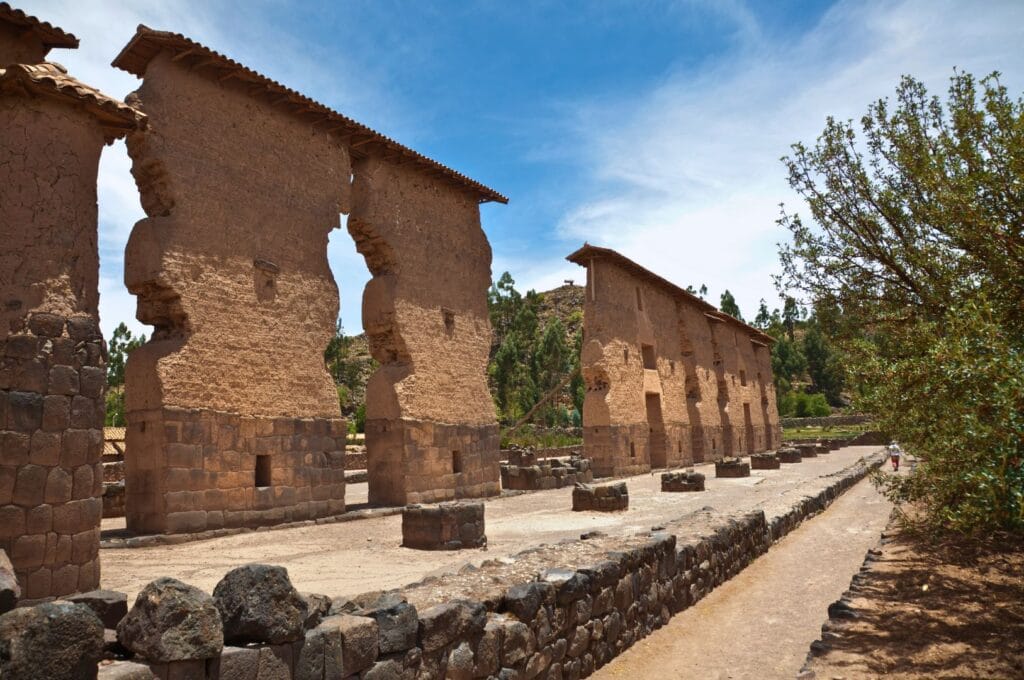
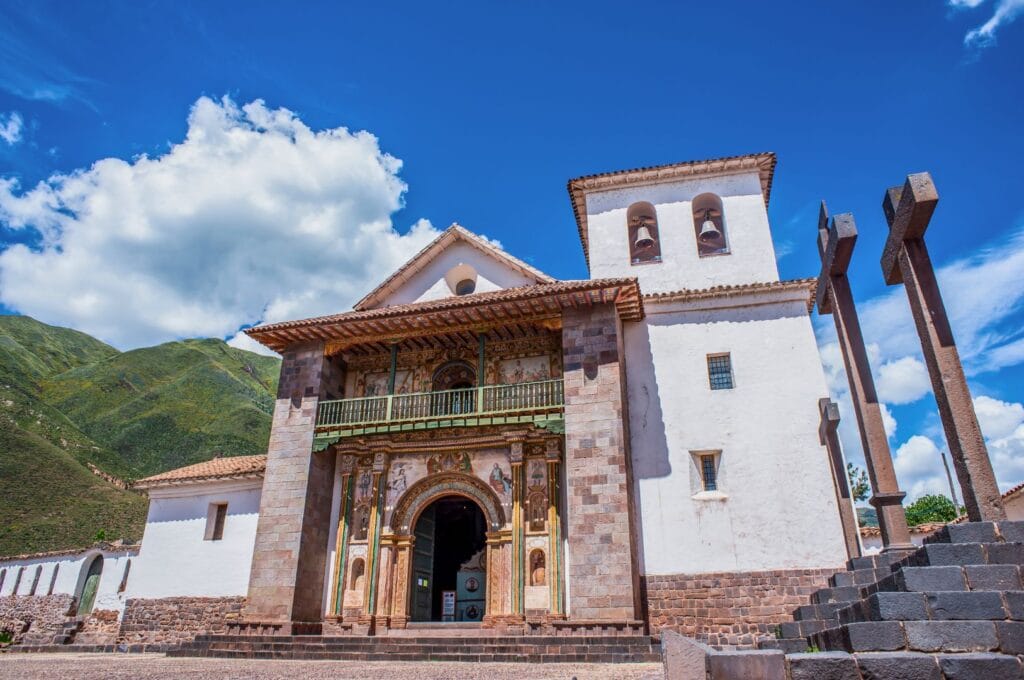
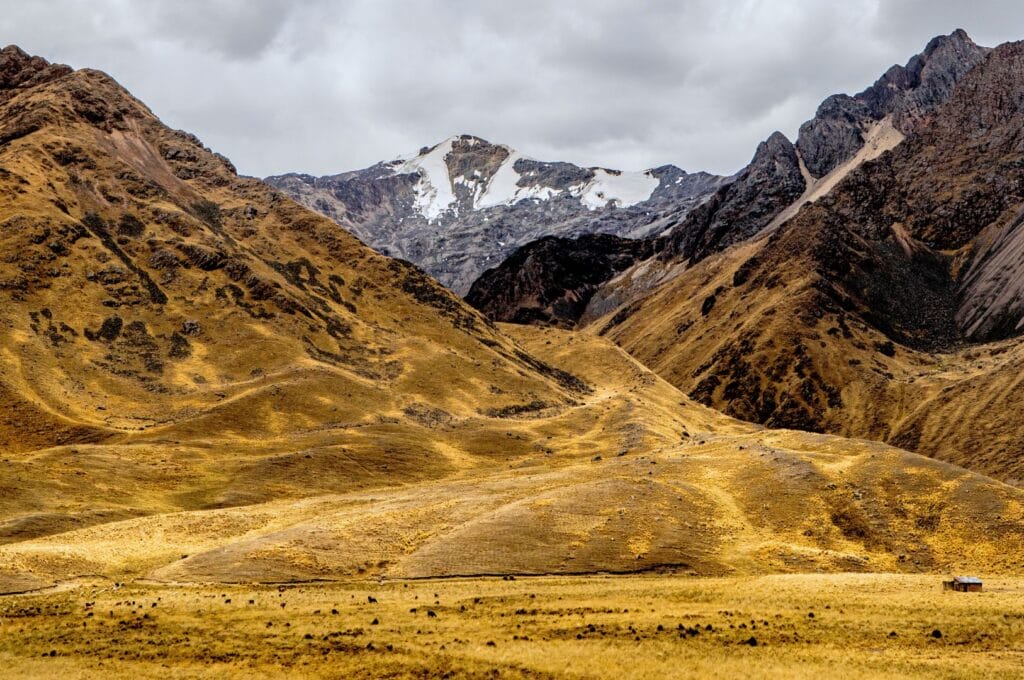
This article contains affiliate links to partner sites. When you use our links to book accommodation, a car, or an activity, you don’t pay anything extra, but we get a small commission. This helps us to offer you free, independent, and ad-free content. Thank you for your support!
Things to do in Copacabana
So forget about the Brazilian Copacabana! Here, no ultra-tanned people, nor wide beaches. The Bolivian Copacabana is a charming little port village of 6000 inhabitants located at the gates of the island we’re interested in, Isla del Sol. But most travelers don’t even spend a night there. In fact, they only see its charming little harbor for a round trip to the island. Yet, we found that spending an afternoon exploring the surroundings was well worth it.
The village center
The main street of the village is not particularly attractive in itself: bars, restaurants, small shops, and hotels follow one another without much interest. So, don’t hesitate to move away from the harbor. In the center of the village stands the immense Basilica of Our Lady of Copacabana. What’s suspicious is that it’s a bit big for such a small village… In fact, it simply houses a Virgin greatly appreciated by pilgrims, so space is needed to accommodate them. Don’t miss taking a stroll through the market to soak up the local atmosphere and taste the local specialties!

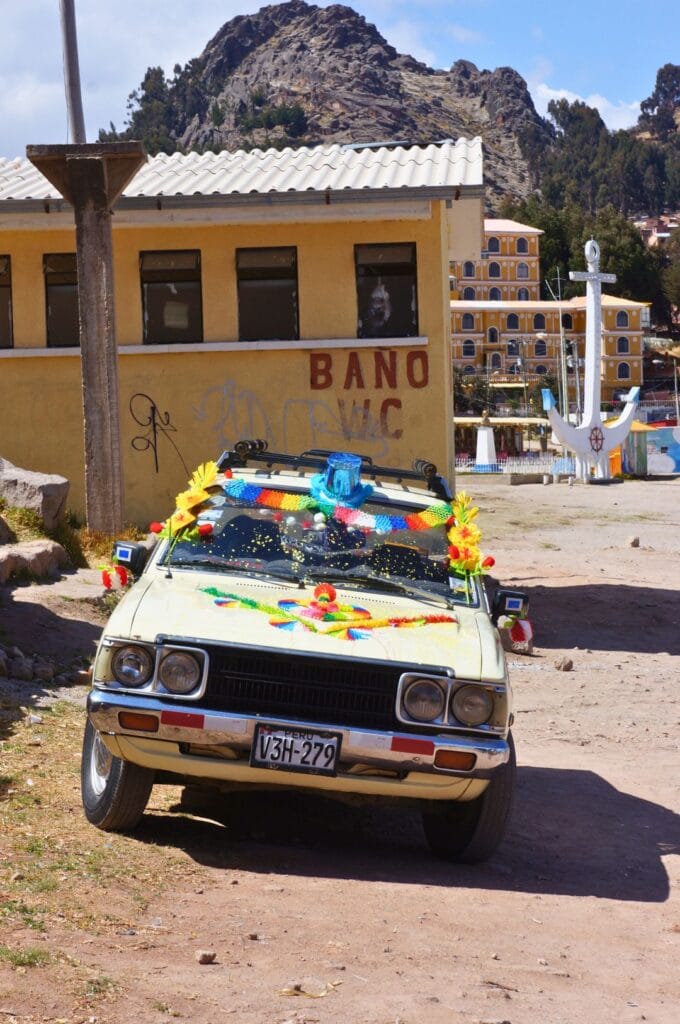
The blessing of cars
Another curiosity you’ll notice when passing through the square in front of the basilica is the cars decorated with multicolored garlands, hats, and flowers. No, it’s not carnival all year round in Copacabana! In reality, people from the region come in front of the basilica to have their cars blessed by this famous Virgin! It seems that it’s more effective than fully comprehensive insurance 😉. So, once your new car is decorated and you’ve said a few prayers to the Virgin, sprinkle it with alcohol and you’re good for 10 years without accidents. Convenient, isn’t it?
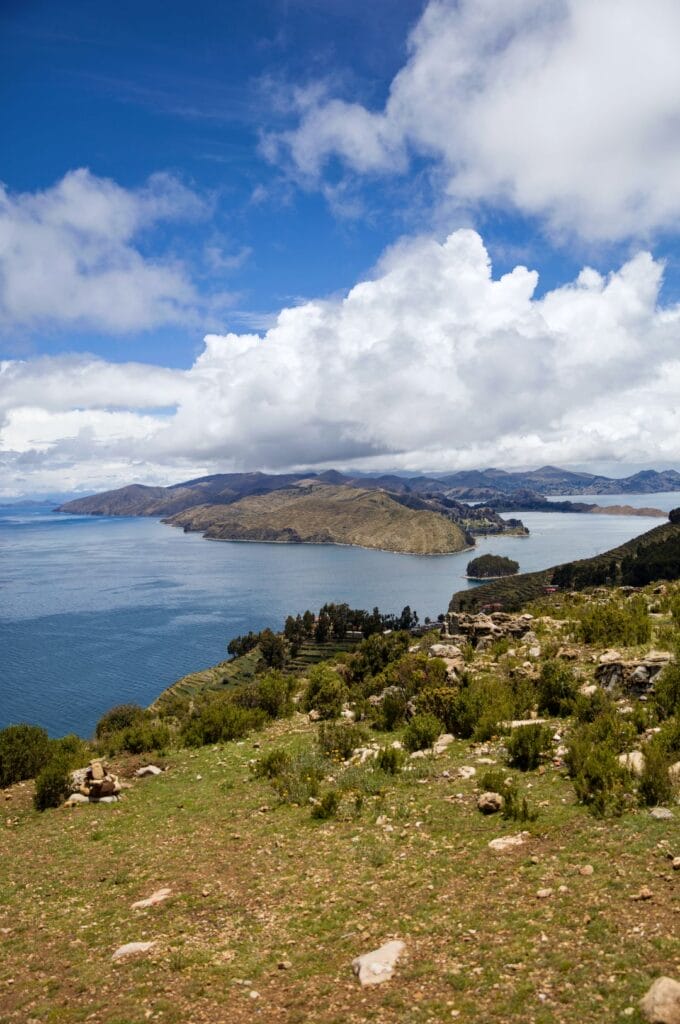
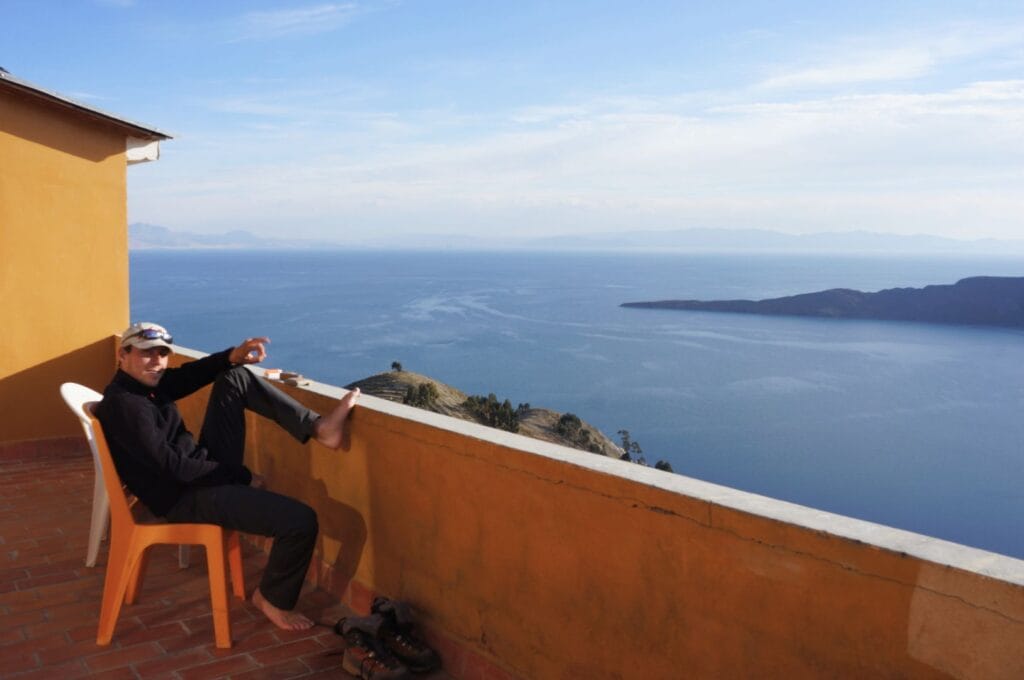
Hike to the tip of the Yampupata peninsula
From Copacabana, take a taxi to Sampaya. There, you have a viewpoint at the top of Cerro Pucara for a breathtaking view of Isla del Sol and Lake Titicaca. Then, take the trail along the ridge to the tip of the Yampupata peninsula. This 13 km hike (and 556 m of positive elevation gain) is a bit sporty if you go all the way, but it’s worth it if you don’t plan to hike on the Island of the Sun the next day.
An alternative to access it is to go to the south of Isla del Sol and ask one of the fishermen for a boat trip to the tip of the peninsula. From there, you’ll only walk back to Copacabana along the coast or take the ridge in the center. At worst, you’ll come across collectivos to take you back to Copacabana if you’re feeling tired.
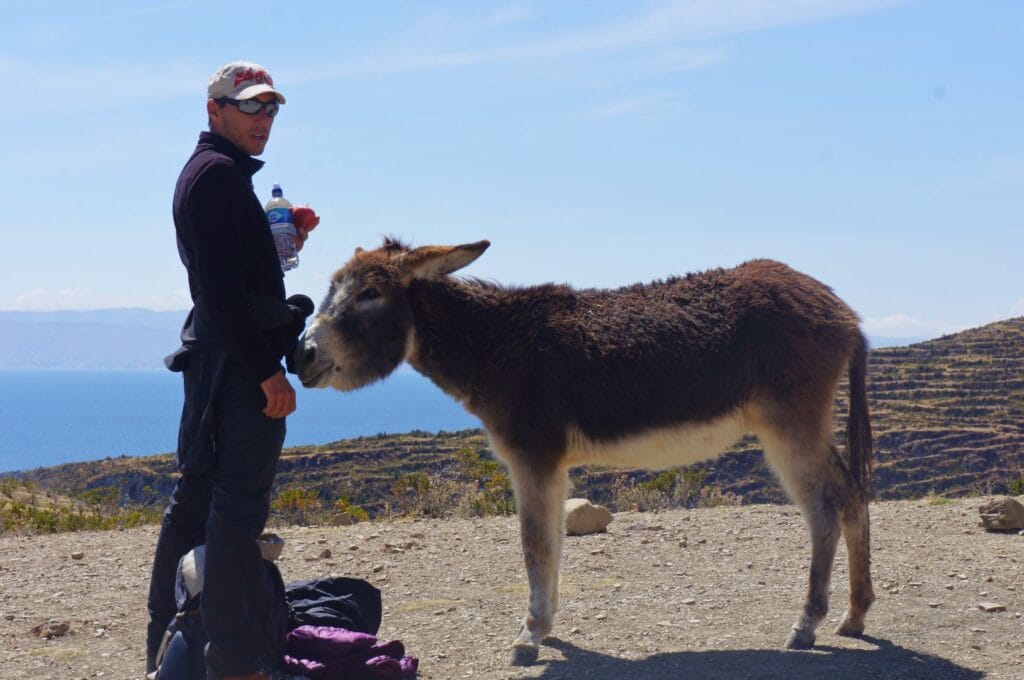
Walk and sunset in Copacabana
From the harbor, you can also go around Cerro Calvario hill overlooking the village along Lake Titicaca. This nice little walk of 1-2 hours will take you out of Copacabana and enjoy the view of the lake. And if you’re up for it, sit down at Cerro Calvario to admire the sunset. It’s really worth it! We had a great rooftop terrace at our hotel, so we enjoyed this magnificent moment quietly from our accommodation.
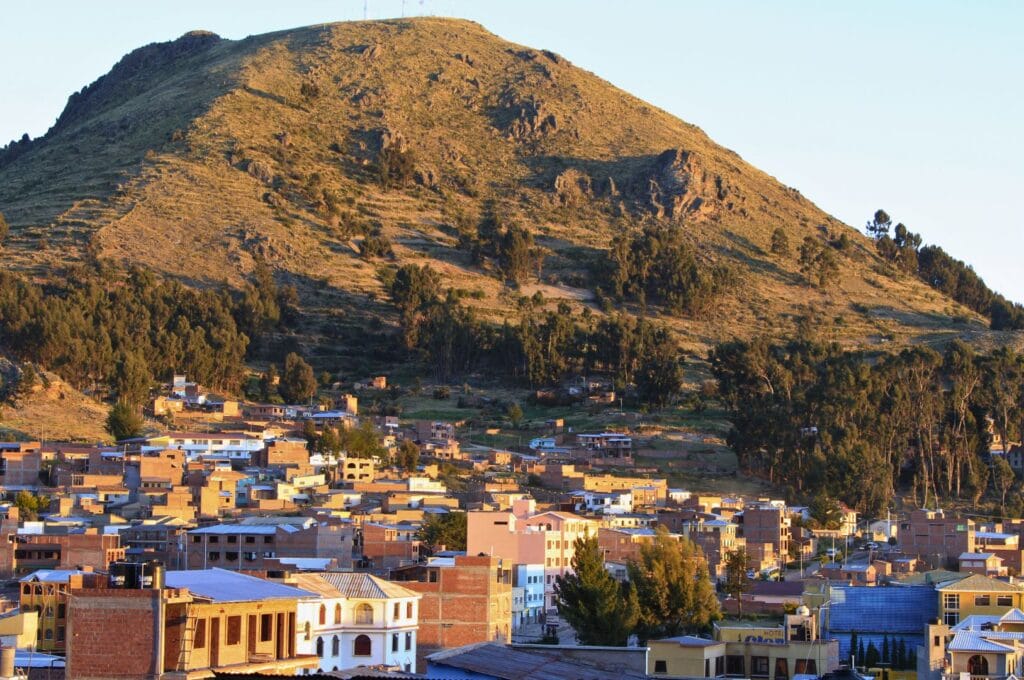
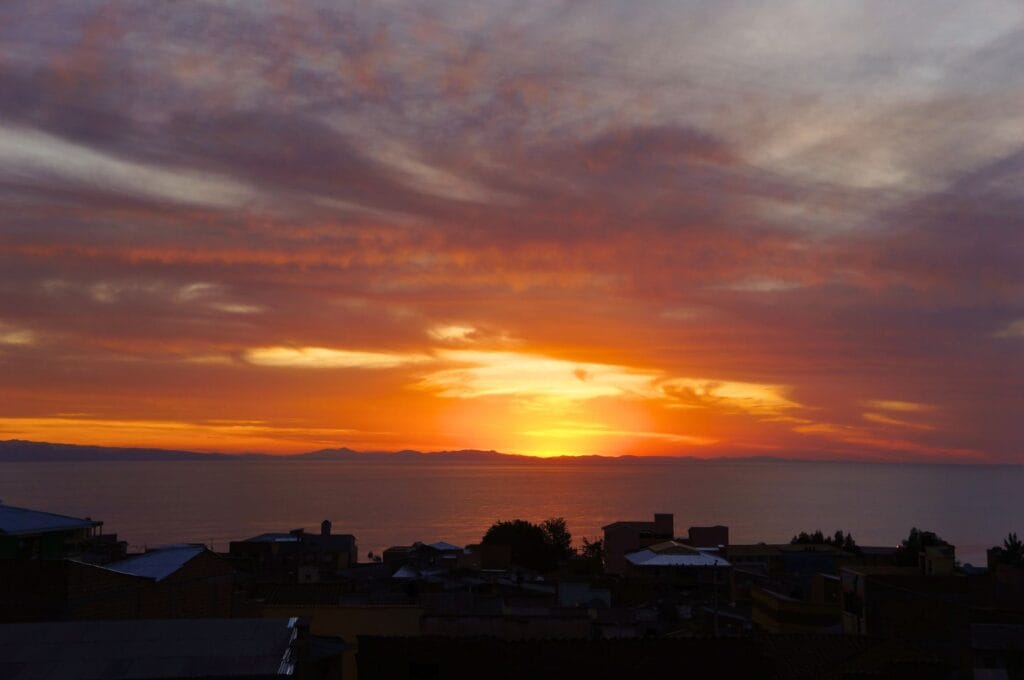
Sleeping in Copacabana
We stayed at Hostal Sonia in Copacabana and we highly recommend it. The night is at a very reasonable price for a double room with a private bathroom. The hotel is impeccable, breakfast is included, and you have access to the terrace for amazing sunsets over Lake Titicaca! To book a hotel in Copacabana at the best price, click here.
Visit Isla del Sol
As Isla del Sol has several villages and communities, you will have no problem finding accommodation and food in each of them. For several years, the northern part of the island was closed to tourists following a conflict between the northern and southern populations. Good news: the north is now accessible again to travelers!
In this part, we detail everything you need to know to visit the Island of the Sun! Little advice: spend a night on the island to soak up the island atmosphere and sunset!
The boat from Copacabana
From Copacabana, you can take boats that go directly to the south (1 h 30) or north (2 h) of Isla del Sol. They depart twice a day at 8:30 a.m. and 1:30 p.m. and cost 20 bolivianos for the south and 25 bolivianos for the north. Often, travelers take one of the 2 boats and return 1 hour later to Copacabana, to take a short tour of the island of the sun. For the return to Copacabana, the boats leave from Yumani at 10:30 a.m. and 3:30 p.m., but ask the captain for confirmation.
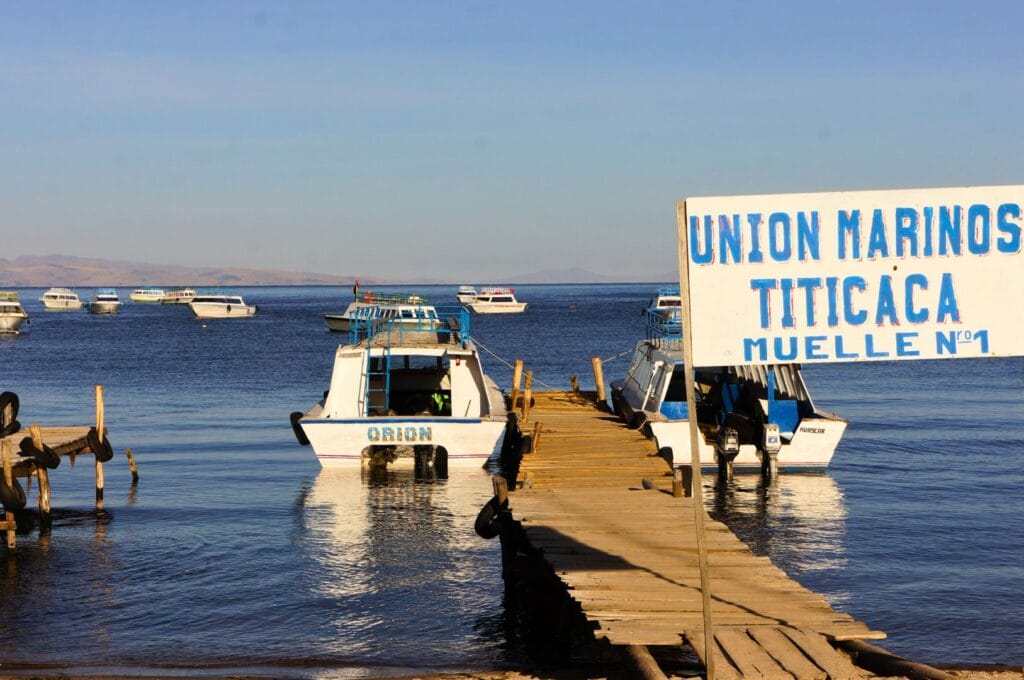
What to do on Isla del Sol?
As we mentioned earlier, we chose to spend a night in Copacabana so we could take the 8:30 a.m. boat. But why stress and take the boat in the morning when there’s one in the early afternoon? Simply because there’s a nice walk to do!
Tip: keep the bare minimum with you and leave your big backpacks in Copacabana at your accommodation, at the port with the locker system, or in La Paz/Cusco depending on your departure city. The island is anything but flat and it’s forbidden to vehicles. You may find donkeys to help you carry your luggage, but we suggest traveling light on this one.
Hiking through the island
2 trails crisscross Isla del Sol: one crosses it from north to south passing through the peaks and the other path passes along the east coast. Since we wanted to have the view from above, we chose the first one. Since we left most of our belongings in La Paz at our hostel, we simply took the boat that arrives at the very north of the island, in the village of Challapampa. Our idea was to walk from Challapampa to Yumani, the village in the south of the island, to sleep there. And what a great idea we had!
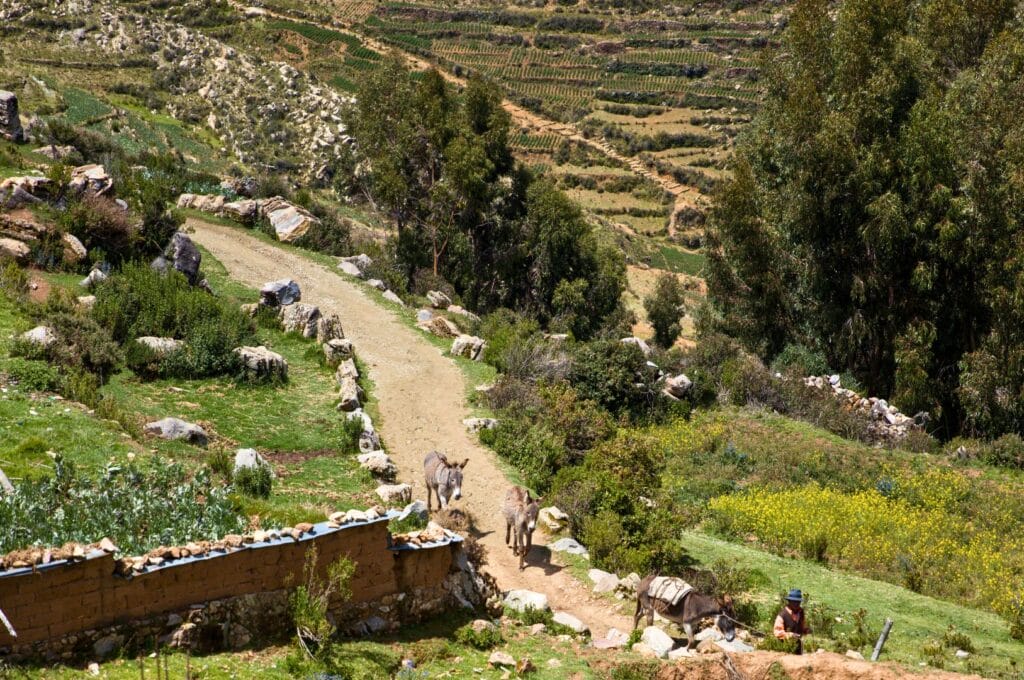
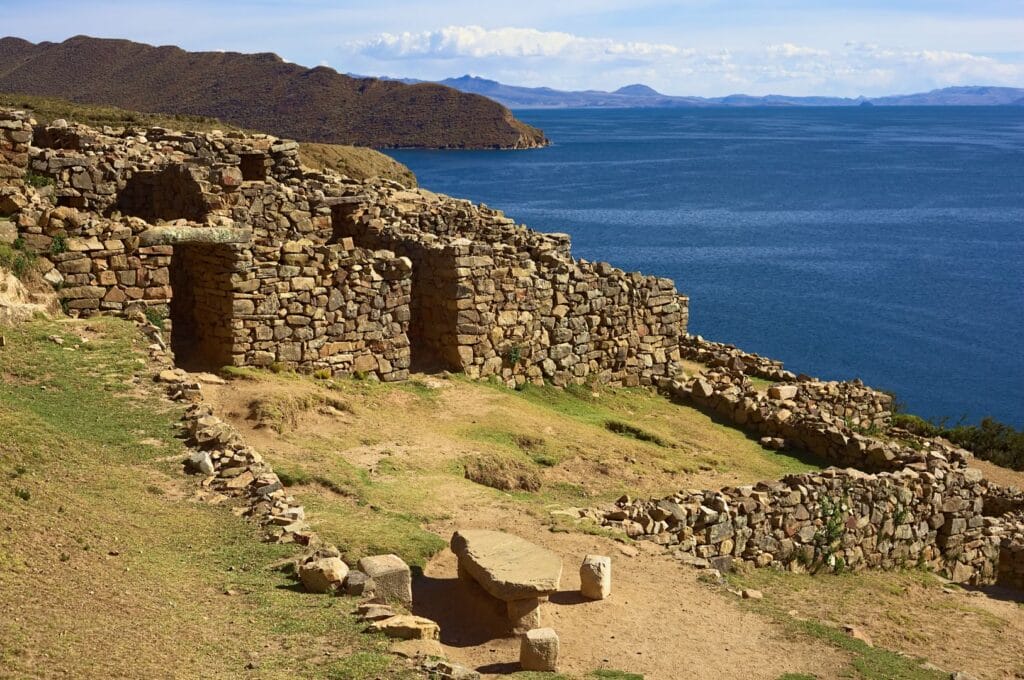
The landscapes along the trail are just splendid with the numerous eucalyptus trees and the Cordillera Real in the background! There are also some Inca ruins right at the north of the island, notably the Chincana ruins above Challapampa, on the trail, and all the way south (the Temple of the Sun), but nothing really incredible in my humble opinion. Maybe we’re a bit jaded after Choquequirao and Machu Picchu.
In total, expect 12 km and 3-4 hours to walk from north to south comfortably with snack/photo breaks. Here’s the map and elevation to give you an idea of the hike.
Another option is to make a loop that passes through Challapampa and Yumani by going on the ridge in the center of the island and then along the coastal trail. In total, this loop is 18-20 km and less than 900 m of elevation gain. Whatever your starting point, you won’t have any problem sleeping on-site since there are accommodations at each end and in the center of the island.
If you skip the hike, don’t miss the viewpoint at the top of Cerro Palla Khasa, 1 km north of central Yumani, for a stunning view of the island and Lake Titicaca!
Climbing the Inca Stairway to the Fountain of Youth
If you arrive in Yumani, you’ll likely take the Inca stairway with its 206 steps to reach the accommodations and restaurants in the south of Isla del Sol. Along the way, you’ll pass an Inca fountain that the conquistadors associated with the legendary Fountain of Youth. Feel free to taste this pure, clear water! While it’s not a major attraction in itself since you’ll likely pass by it anyway, the stairway is quite unique in this landscape.

Passage fees on the island
A minor downside to Isla del Sol is the passage fees. We were asked three times to pay a fee to walk along the trail crossing the island! Once 10 bolivianos, then 15 bolivianos, and finally 5 bolivianos. Although the amounts aren’t huge, it’s the concept of having to pay three times just to walk along a trail that’s a bit annoying! It would be better if the three communities could agree on a single entry fee for Isla del Sol, so we don’t feel like we’re being taken advantage of. But anyway, let’s move on…
Sleeping on Isla del Sol
Once you arrive in the southern village of Yumani, we have a single recommendation for accommodation on Isla del Sol: the Hostal Puerta del Sol (40 bolivianos per person with a shared bathroom) for an incredible sunset view. It offers one of the best panoramic views on the island! The comfort is basic but sufficient for one night. Plus, it’s located right next to the restaurants. Another nice hotel is Hostal Jallala. It’s slightly more expensive than Puerta del Sol, but breakfast is included, and the comfort is better.
Camping is allowed on Isla del Sol, but the northern part is more suitable for it. It’s a great opportunity to enjoy the small beaches cheaply and soak up the sun. Just keep in mind that at 4000 meters altitude, the sun is strong!
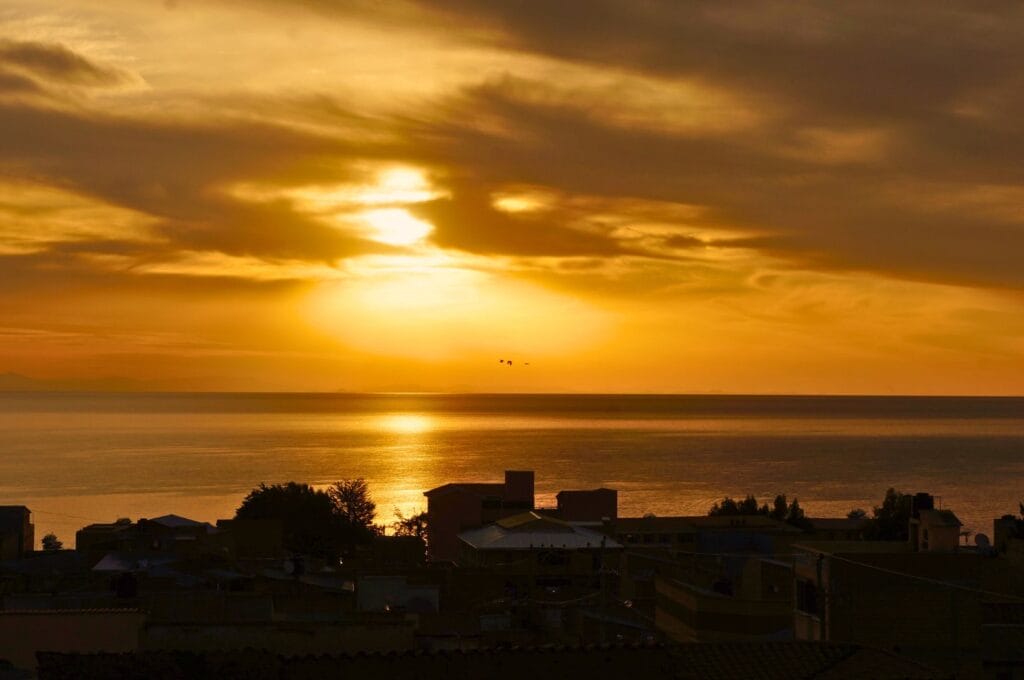
Eating on Isla del Sol
We highly recommend dining at Las Velas, located right next to the hostal Puerta del Sol. It’s one of our favorite restaurants in South America, no less! Admittedly, it requires some patience. Between ordering and being served, it took nearly two hours… But it was absolutely worth it! The chef’s trout en papillote with seasonal vegetables was simply divine! It’s not to be missed.
A special feature here is candlelit dinners every night! To pass the time, we recommend arriving early in the evening to enjoy the sunset, as the view from the dining room is breathtaking over Lake Titicaca! Board games are also available for guests. A final tip: bring a flashlight or small torch for the walk back, as you’ll cross a small forest.
Bring enough cash with you because credit cards are not accepted on Isla del Sol, and there are no ATMs on the islands of Titicaca. So, make sure to withdraw money in Copacabana or a major city.
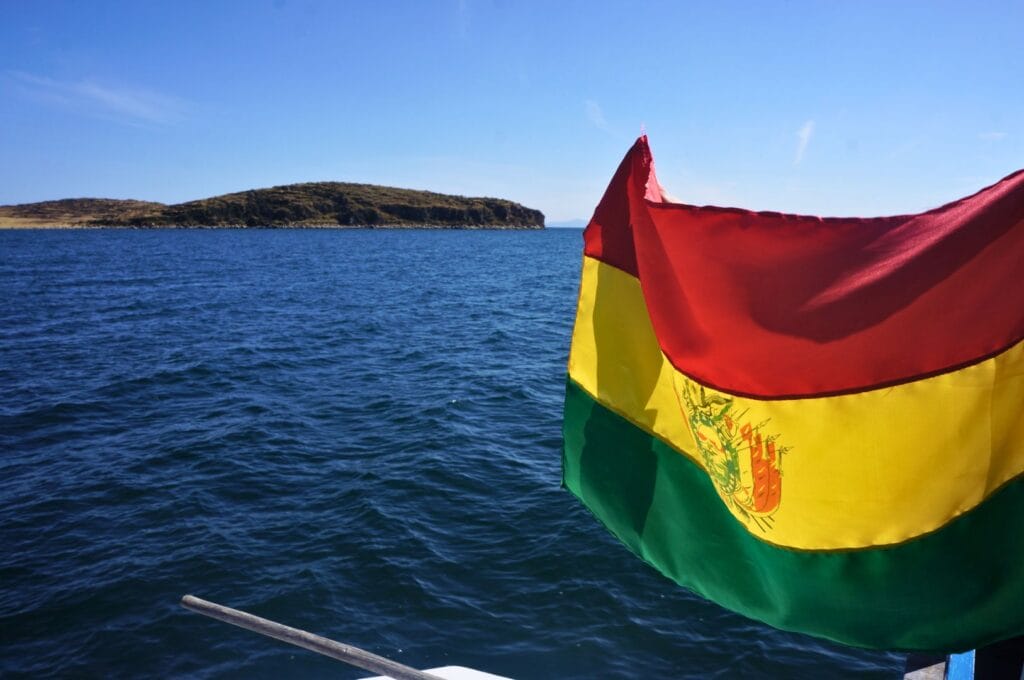
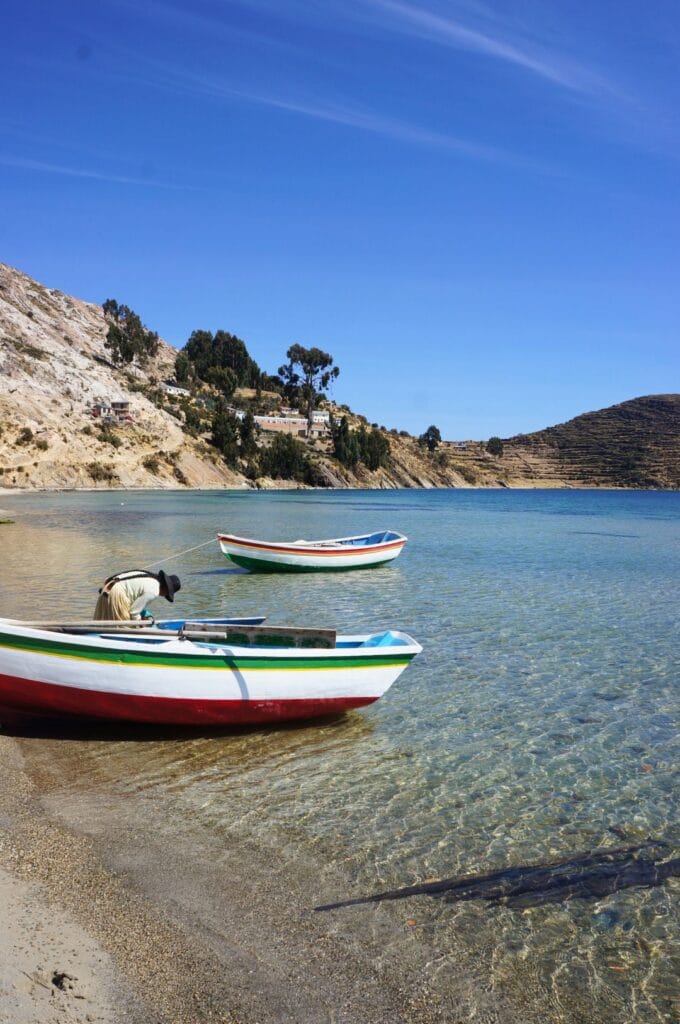
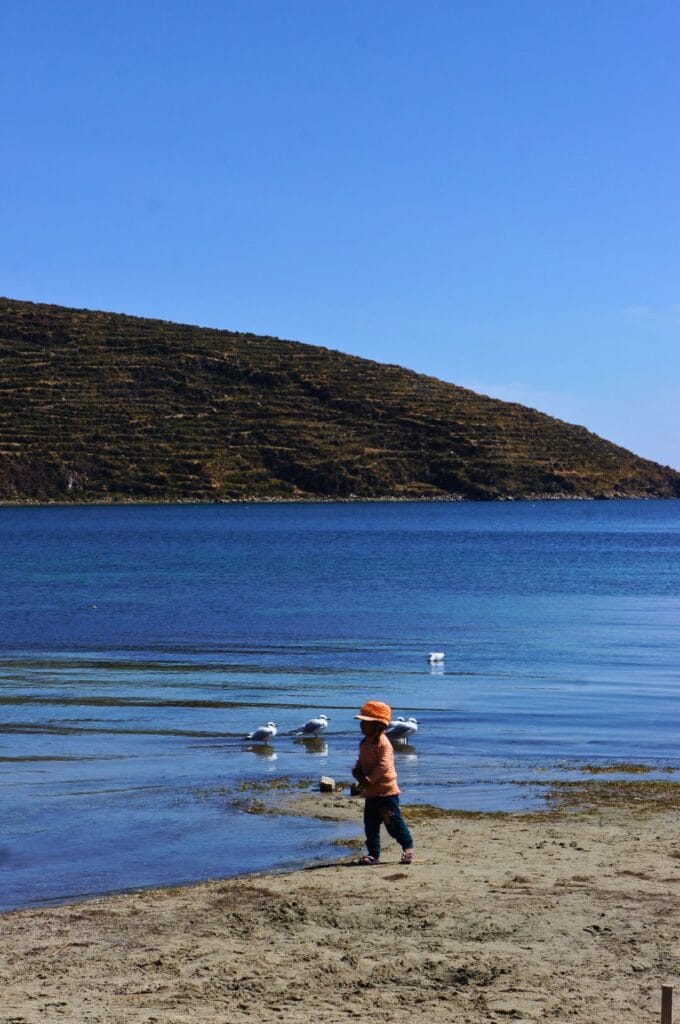

What else to do around Lake Titicaca?
Since we only had two weeks with my parents, we decided to take the boat back the next day to return to La Paz. But if you have more time, there’s plenty to do around Lake Titicaca; Isla del Sol is not the only island to explore on the Bolivian side. Likewise, if you’re in Peru, some spots are worth visiting (especially from Puno). The two sides of the lake are quite different, and tourism plays a more or less important role, sometimes at the expense of authenticity. But it’s a matter of personal preference, so see for yourself on-site. Here you can find all the circuits around Lake Titicaca.
Isla de la Luna
Neighboring Isla del Sol, Isla de la Luna is smaller. After all, isn’t the sun larger than the moon? Due to its size, there are fewer points of interest: a nice viewpoint over the lake and the Cordillera Real, and the ruins of an ancient Inca temple, Iñak Uyu (the Temple of the Virgins). You can tour the island in about 30 minutes. Note that there is also an entry fee of 10 bolivianos on the Island of the Moon.
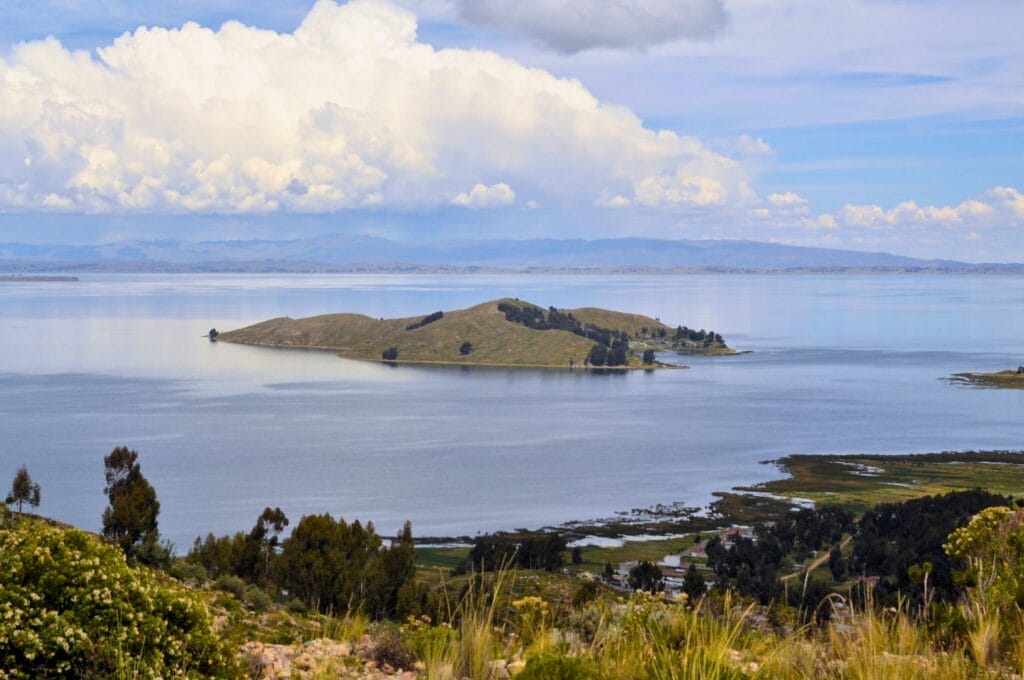
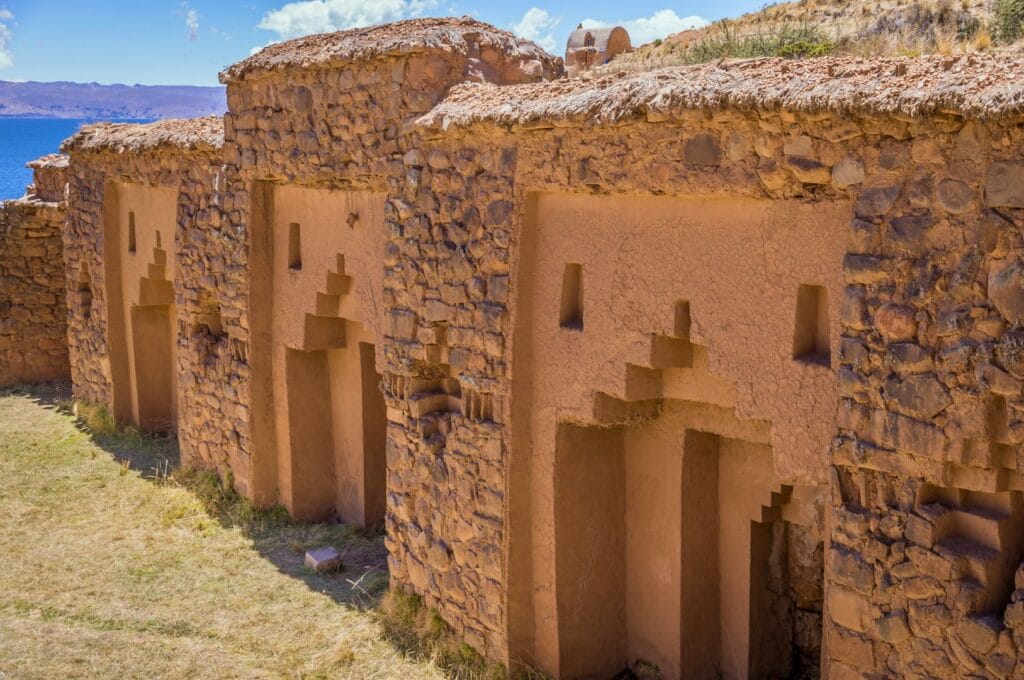
Illampu circuit
This little-known 6-7 day trek will take you off the beaten track. Basically, it takes you around the Illampu massif, which rises to an altitude of 4,740 metres. You’ll cover this immense expanse of the Cordillera Real, between mountains, lagoons and hundreds of llamas, almost alone. To find out more, read Anaïs and Bruno’s practical guide of their Illampu circuit.
The Tiwanaku archaeological complex
Another notable attraction on the Bolivian side of Lake Titicaca is the Tiwanaku archaeological site, a UNESCO World Heritage site. It was the spiritual and political center of the pre-Inca Tiwanaku civilization, one of the most important of the pre-Hispanic era. This empire reached its peak between the 6th and 10th centuries! The site features several pyramids and temples, showcasing the power of this civilization. If you love history and archaeology, don’t miss Tiwanaku!
The entrance fee is 100 bolivianos. To get there, buses depart from La Paz’s Terminal Cementerio (ticket price: 20 bolivianos for a 1.5-hour journey). Alternatively, you can opt for a guided tour with transportation included.
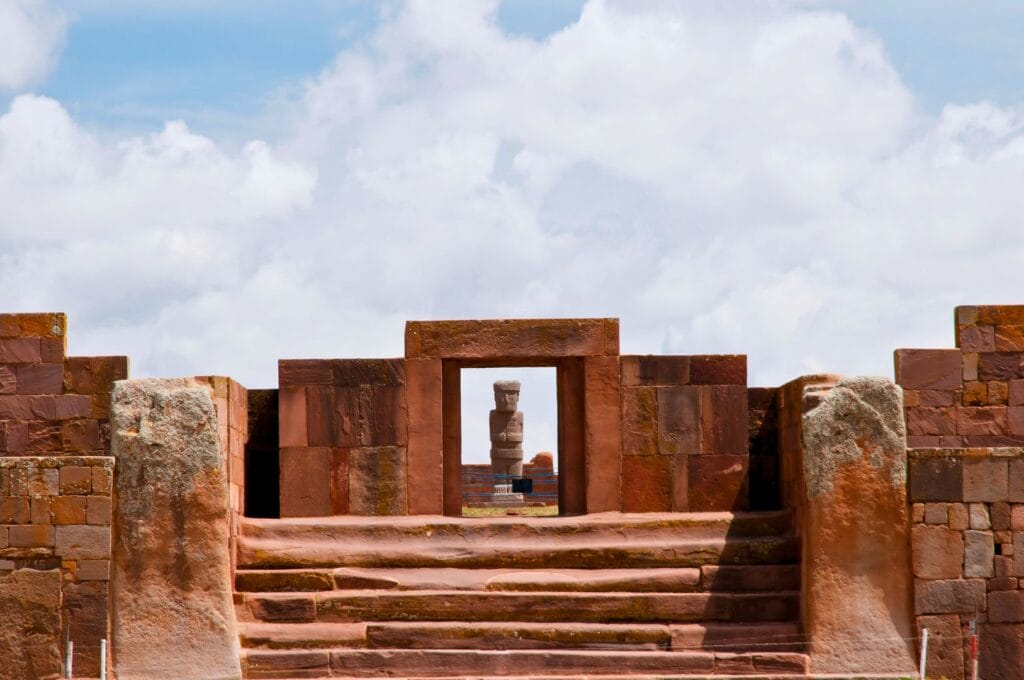
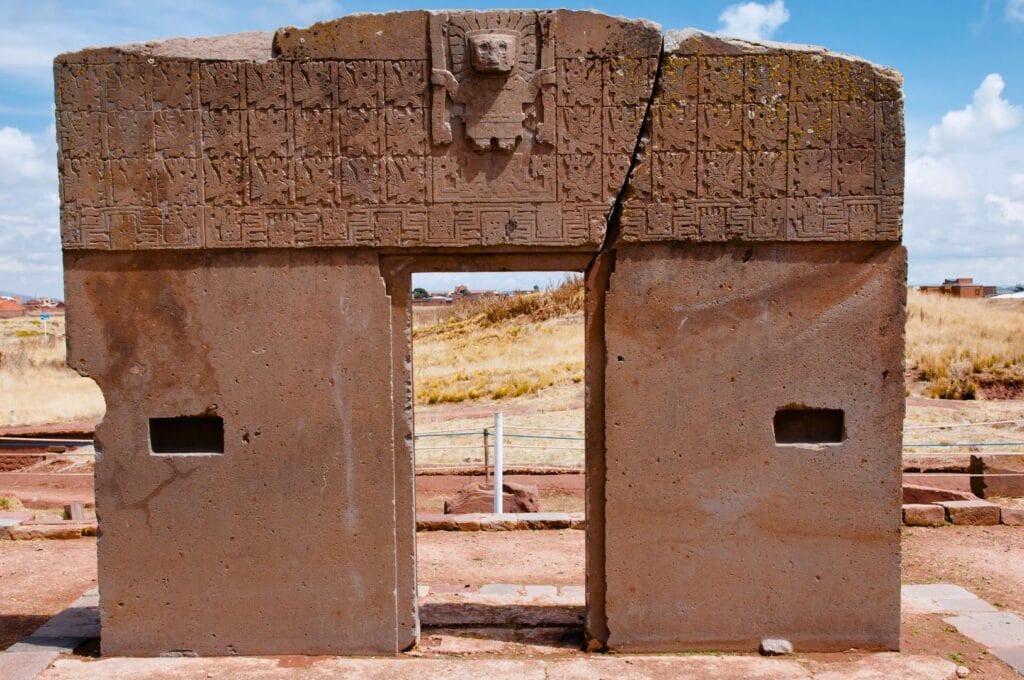
Capachica Peninsula
On the Capachica Peninsula, white sandy beaches blend with eucalyptus trees to create a sublime landscape. This more wild and preserved environment is home to Quechua communities who live off agriculture and fishing. Here, they offer more ethical community-based tourism around Lake Titicaca, especially in Llachon and Paramis. In addition to accommodation, families will take you out on the lake to fish, involve you in preparing meals that you share with them, teach you weaving, and more. It’s a far cry from the spectacle of the Uros Islands! Plus, you’re likely to be the only tourists visiting Llachon. (Don’t miss the Carus viewpoint east of the village!) Find all homestays here.
To reach the Capachica Peninsula from Puno, you need to take a minibus for a 1-hour trip. They are often near the Bellavista market. If you’re coming from Cusco, it’s best to go to Juliaca, then Capachica, before taking a collectivo to Llachon. There are regular minibuses available. Feel free to negotiate prices!
If you want to visit both sides of Lake Titicaca, boats shuttle between Llachon and Copacabana. It’s best to check on-site.
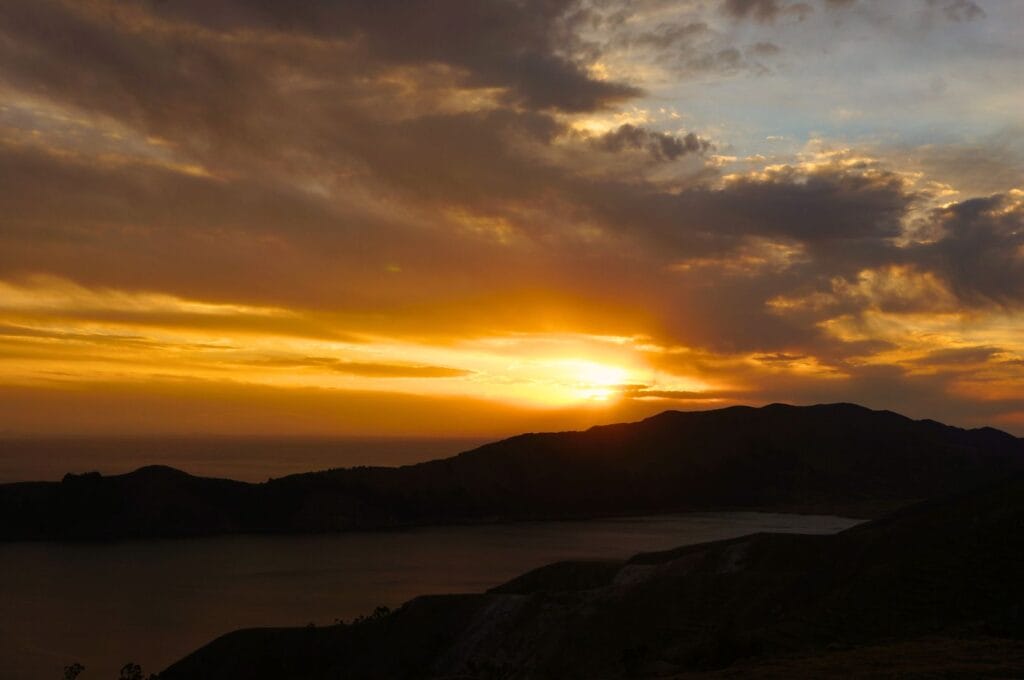
The Uros Islands
From the Peruvian shores, you can access the Uros Islands located 5 km from Puno. Their uniqueness? These artificial islands are entirely made of totora, an endemic plant resembling reeds, and each island is inhabited by several families! But tourism thrives on these floating islands of Lake Titicaca, often at the expense of authenticity. Initially, the Uros people built these islets to seek refuge. After their disappearance, the Aymaras took over, maintaining traditions and showing tourists their way of life. With organized tours (most visit Uros), everything is well set up to welcome travelers. The program includes lambada, somewhat folkloric performances, and souvenirs that aren’t very local…
If you’re looking for someone to discover the real side of the Uros Islands, Felix will take great care to give you a boat tour. Moreover, he’ll share stories about life and culture from a more traditional and authentic perspective. The price includes transport, an overnight stay, dinner, breakfast, and a tour of the islands. You can even borrow kayaks and paddle on the lake if you wish.
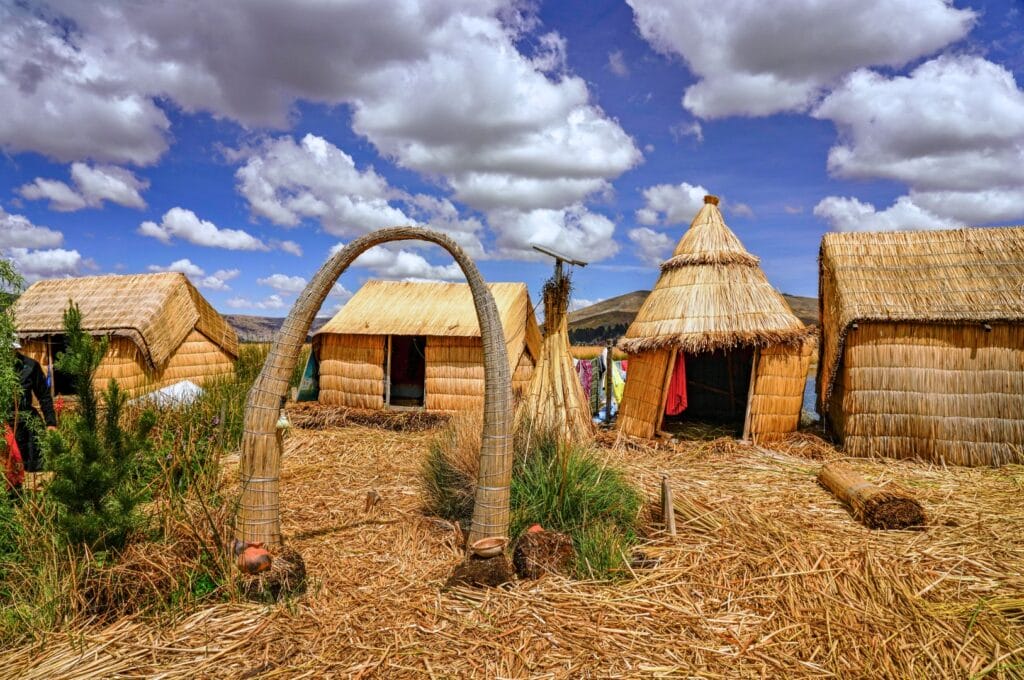
Amantani Island
Accessible from the Capachica Peninsula and Puno, Amantani is the largest island on the Peruvian side of Lake Titicaca. On this peaceful island, quieter than its neighbors, you can climb the two summits, Pachamama and Pachatata, for a magnificent view. While exploring this island, you’ll also see terraced fields along the lake’s edge. Some tours offer overnight stays on Amantani, but you can also arrange everything yourself from Puno if you want to skip the Uros Islands. Inquire at the Puno port and book your accommodation on the island (you can also ask your host how to get to Amantani).
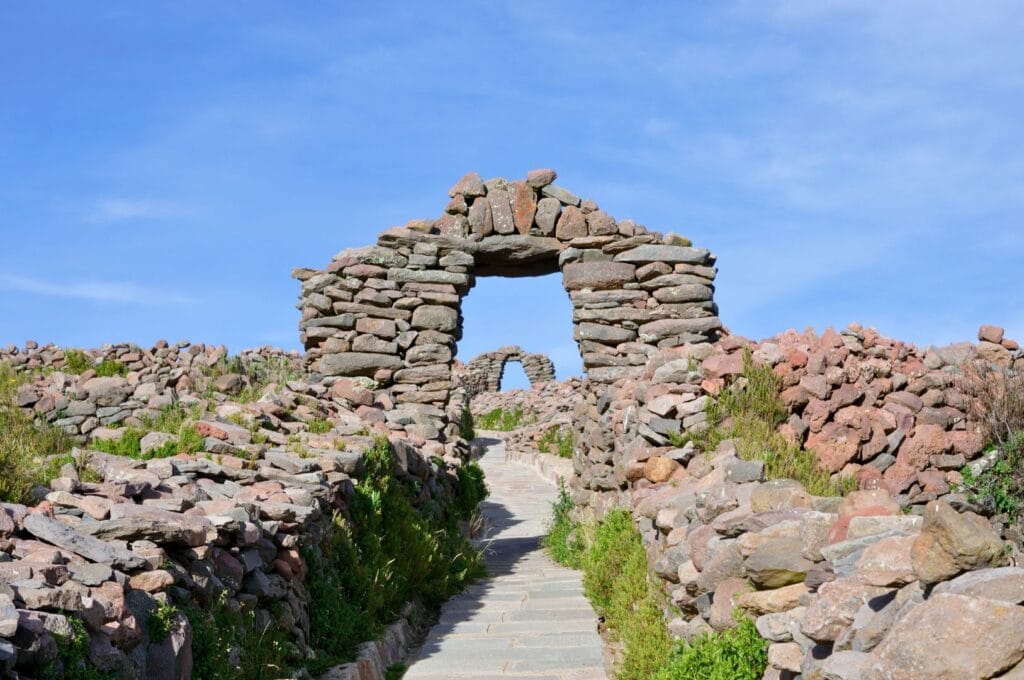
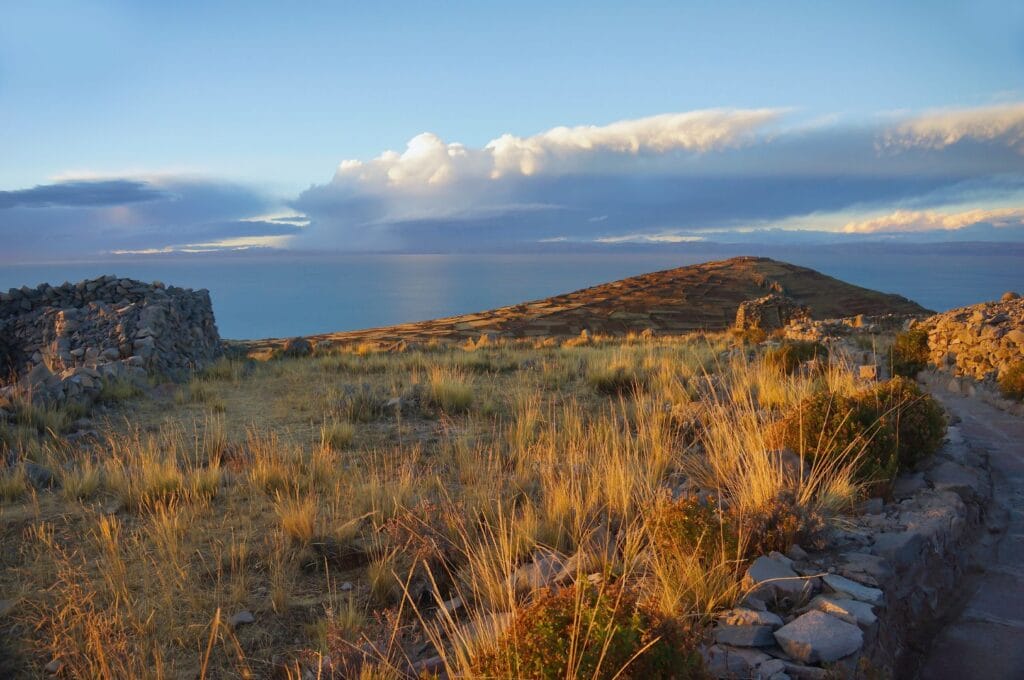
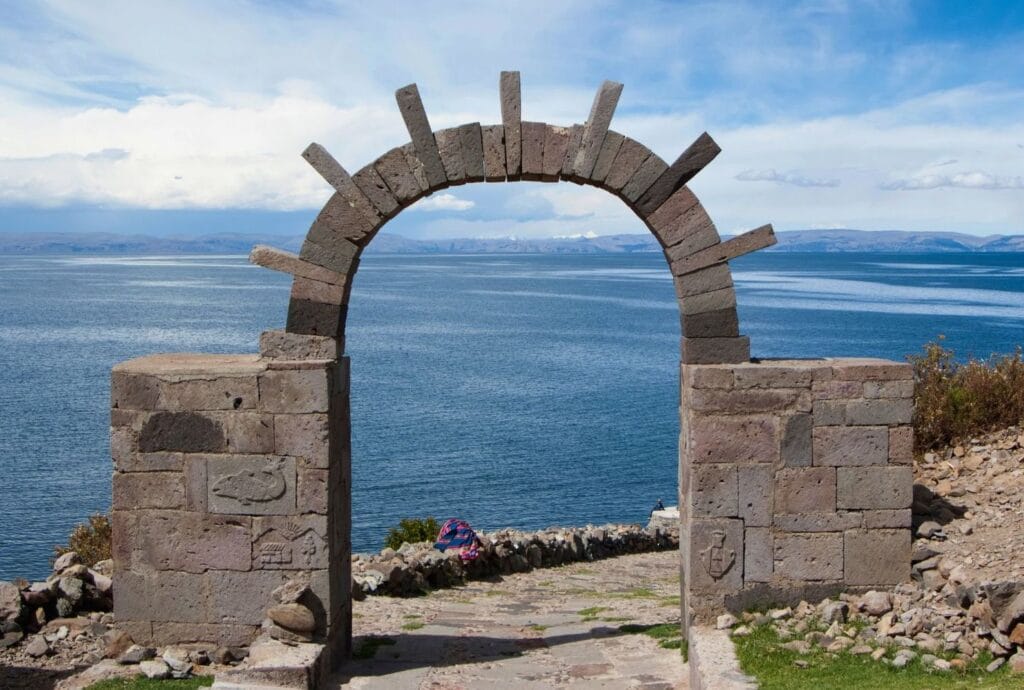
Taquile Island
Another serene spot on the lake, Taquile Island has 2,000 inhabitants and historically served as a prison during Spanish colonization. There are Inca ruins in the north and terraced fields. The island’s craft specialty is weaving! In fact, its ancient textile art is listed as a UNESCO intangible cultural heritage. We also recommend staying with locals here, as tours to Taquile invariably pass through the highly touristy Uros Islands. By staying with locals, you support the local economy while discovering a more traditional side of life on Lake Titicaca. Moreover, no agency offers overnight stays on Taquile, unlike Amantani and Uros. To arrange this, contact your host to learn about boat ticket details or go directly to the port of Puno.
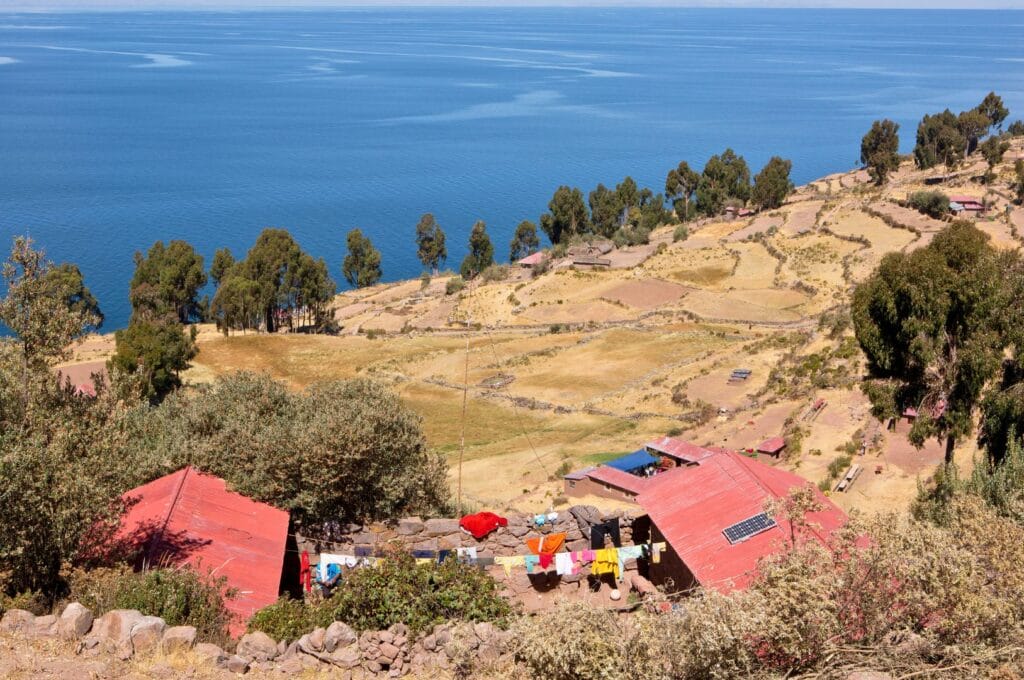
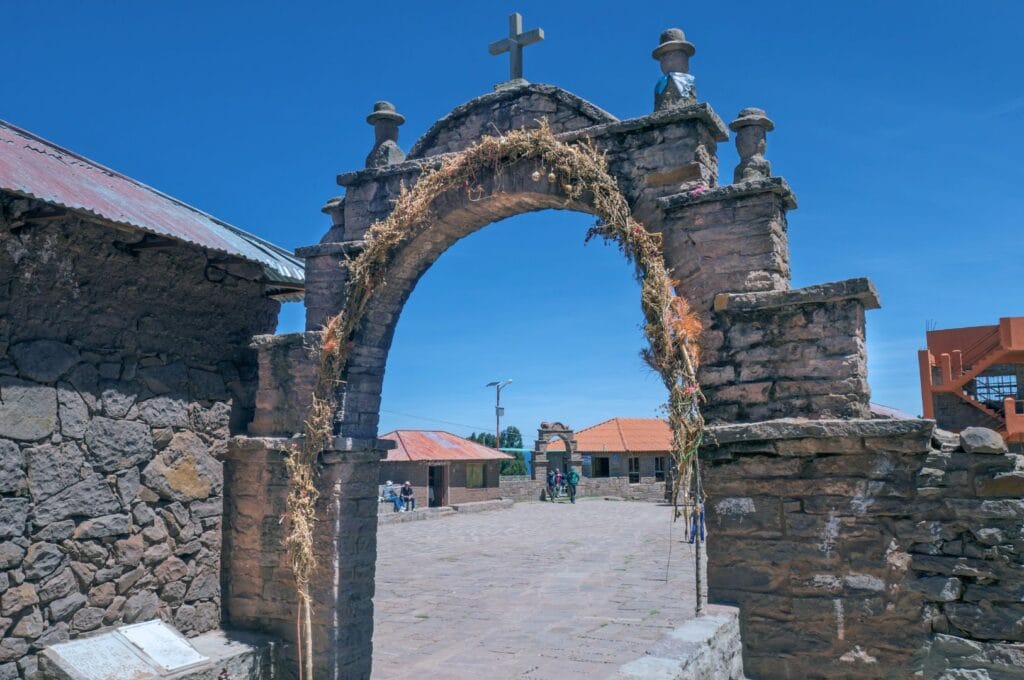
Ticonata (Tikonata) Island
If you want to venture even further off the beaten path, you should visit Ticonata Island, recognizable by its round huts! Located near the village of Ccotos on the Capachica Peninsula, it’s perfect for an overnight stay in a timeless setting. We found little information about this island, but you can likely find a fisherman to take you there from Ccotos or Chifron. Once there, you will stay in one of the huts and participate in daily life. If you visit this island during your trip to Titicaca, feel free to leave us a comment!
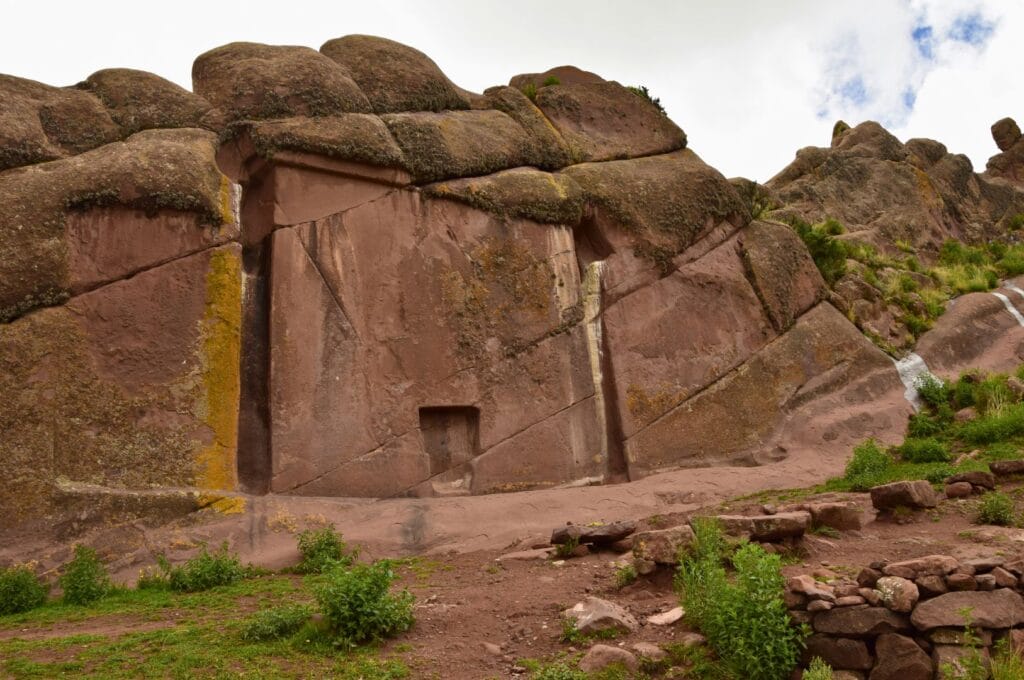
Aramu Muru archaeological site
Leaving the island environment for the mainland, we find the Aramu Muru archaeological site. Also called the Gate of the Gods, the portal of this complex with its immense stones is the subject of many legends and conspiracy theories, in addition to its historical significance. Its discovery is quite recent, dating back to the 1990s! You can come up with your own theory after visiting it :).
From Puno, this guided tour takes you to notable monuments on the southern shore of Lake Titicaca on the Peruvian side. In addition to Aramu Muru, you’ll see Inca Uyo, the famous fertility temple with its characteristic features, the Chullpas de Molloco and its funerary towers, and the city of Juli, the Rome of Latin America with its beautiful churches!

And that’s the end of this chapter on Lake Titicaca. Feel free to leave us a comment if you have any questions! It’s time for us to return to La Paz before heading to the small town of Uyuni and its famous salt desert! We’ve been looking forward to this moment since planning our trip around the world!
Pin it
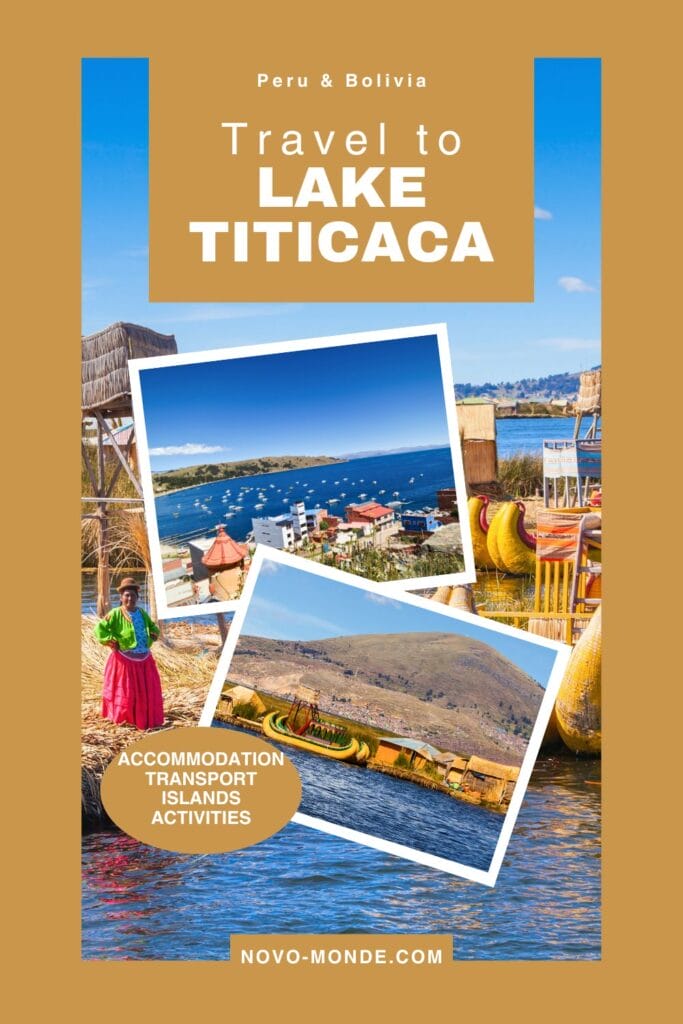
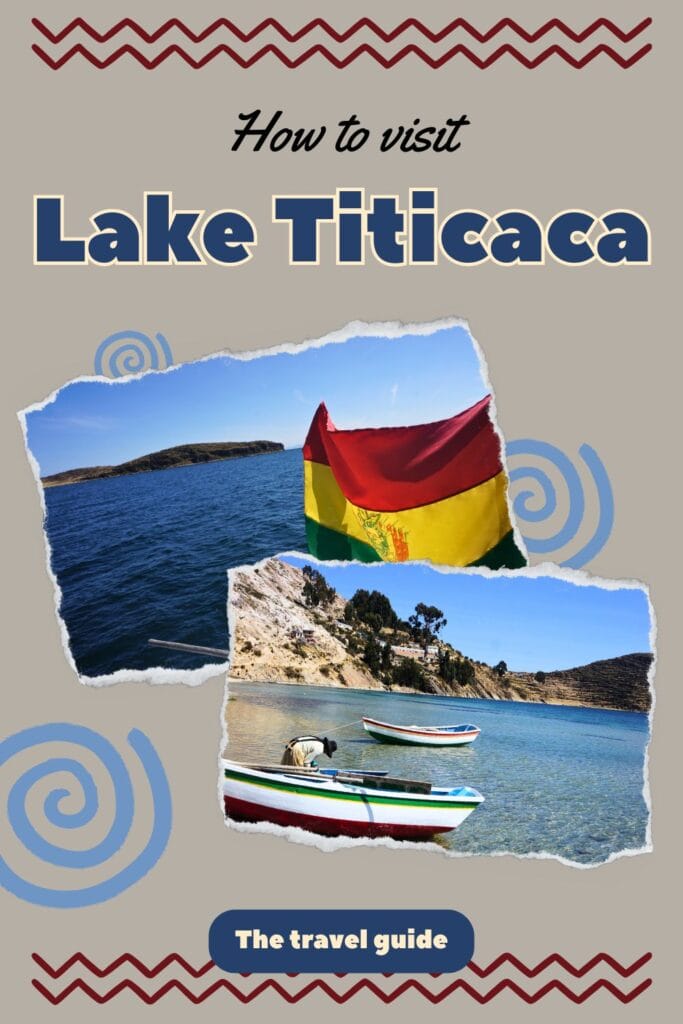
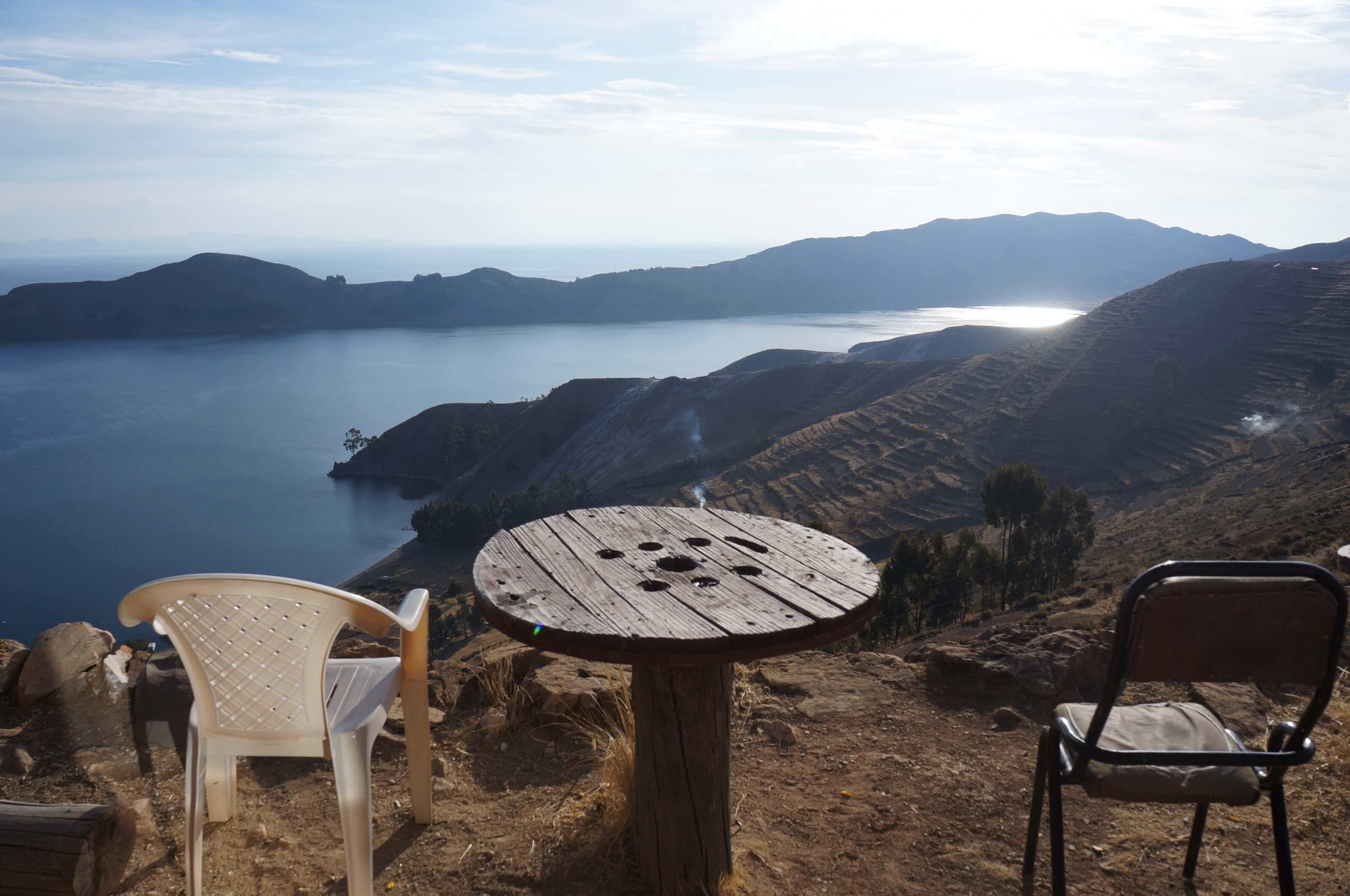
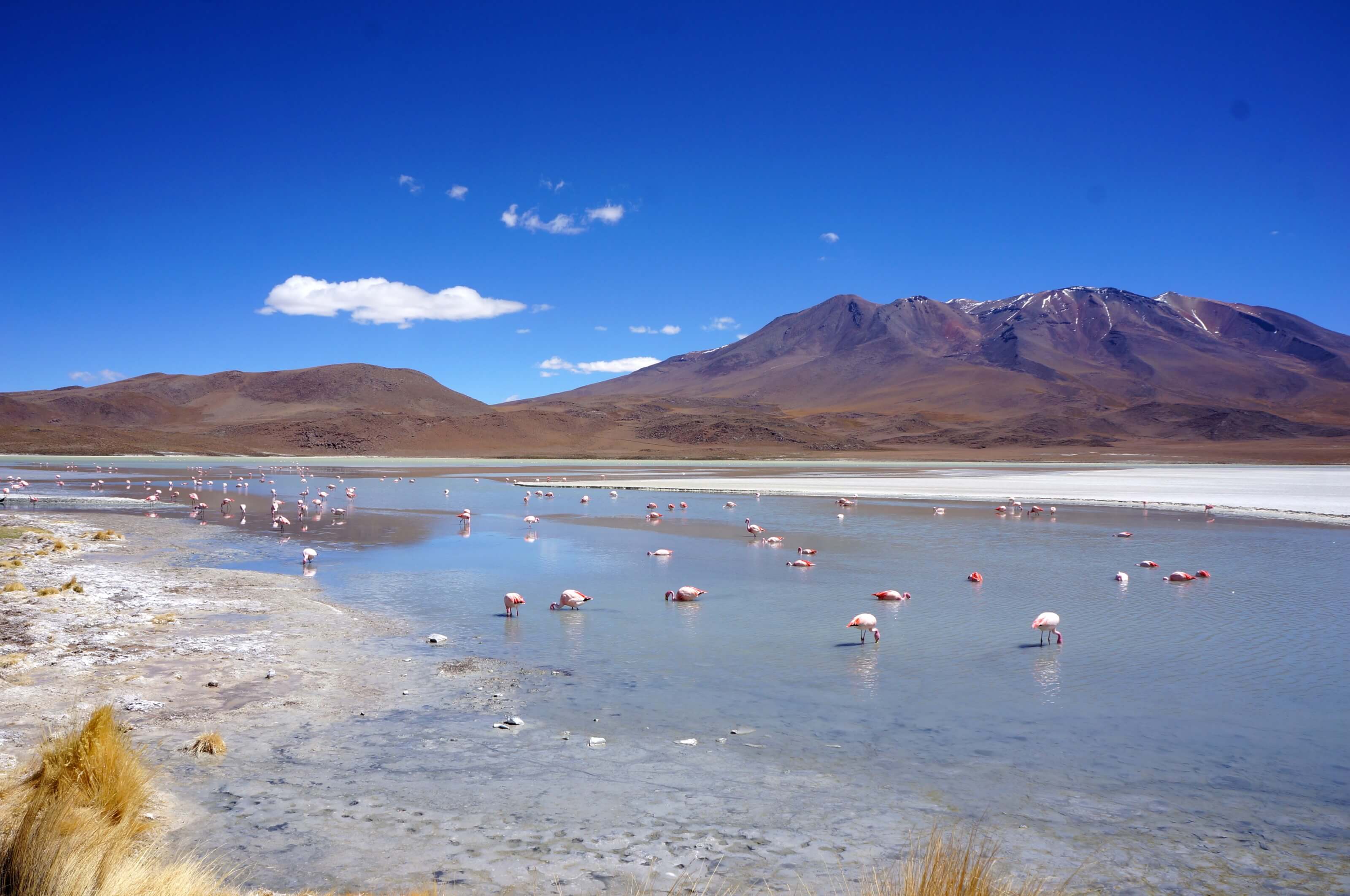
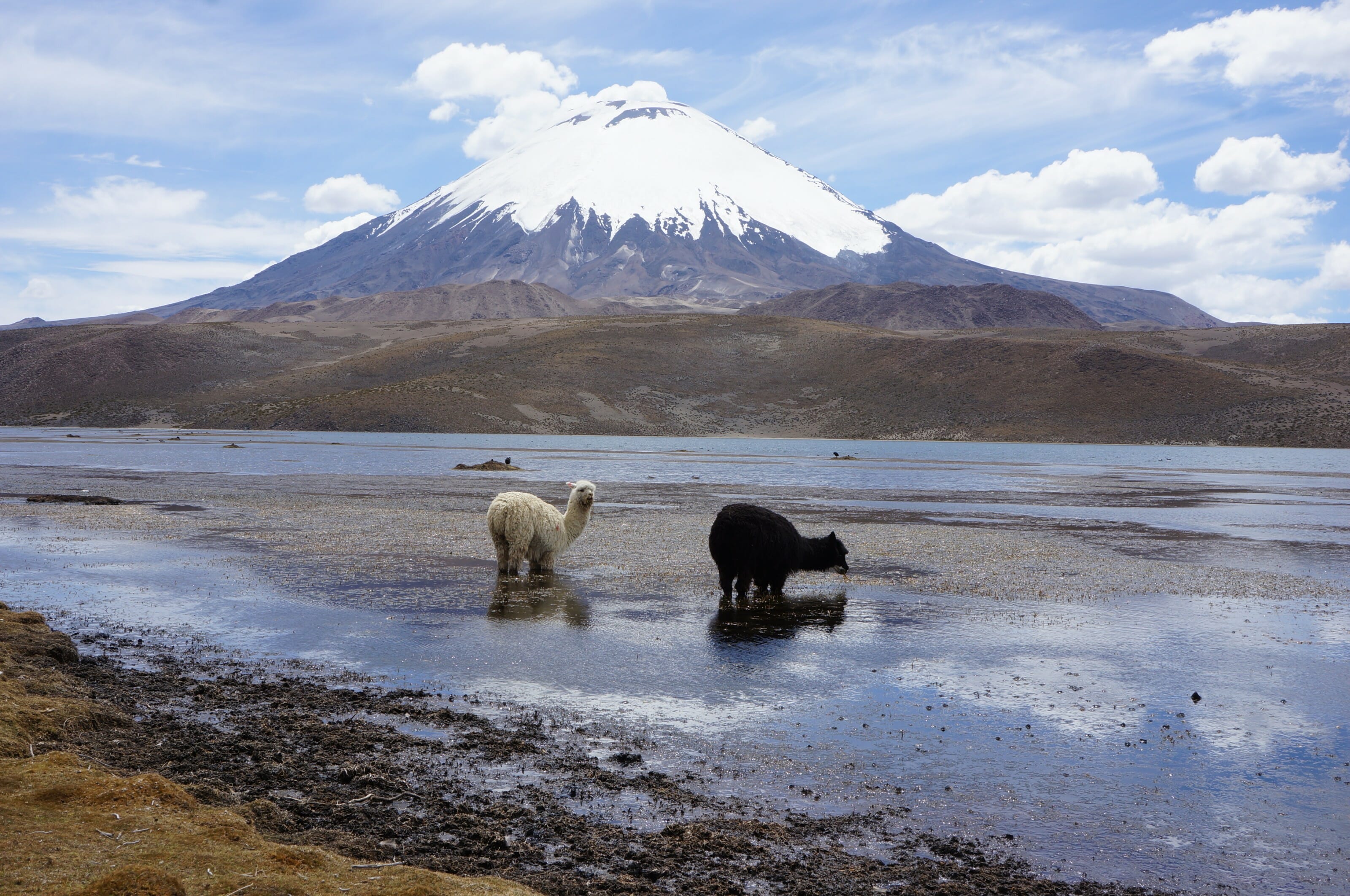
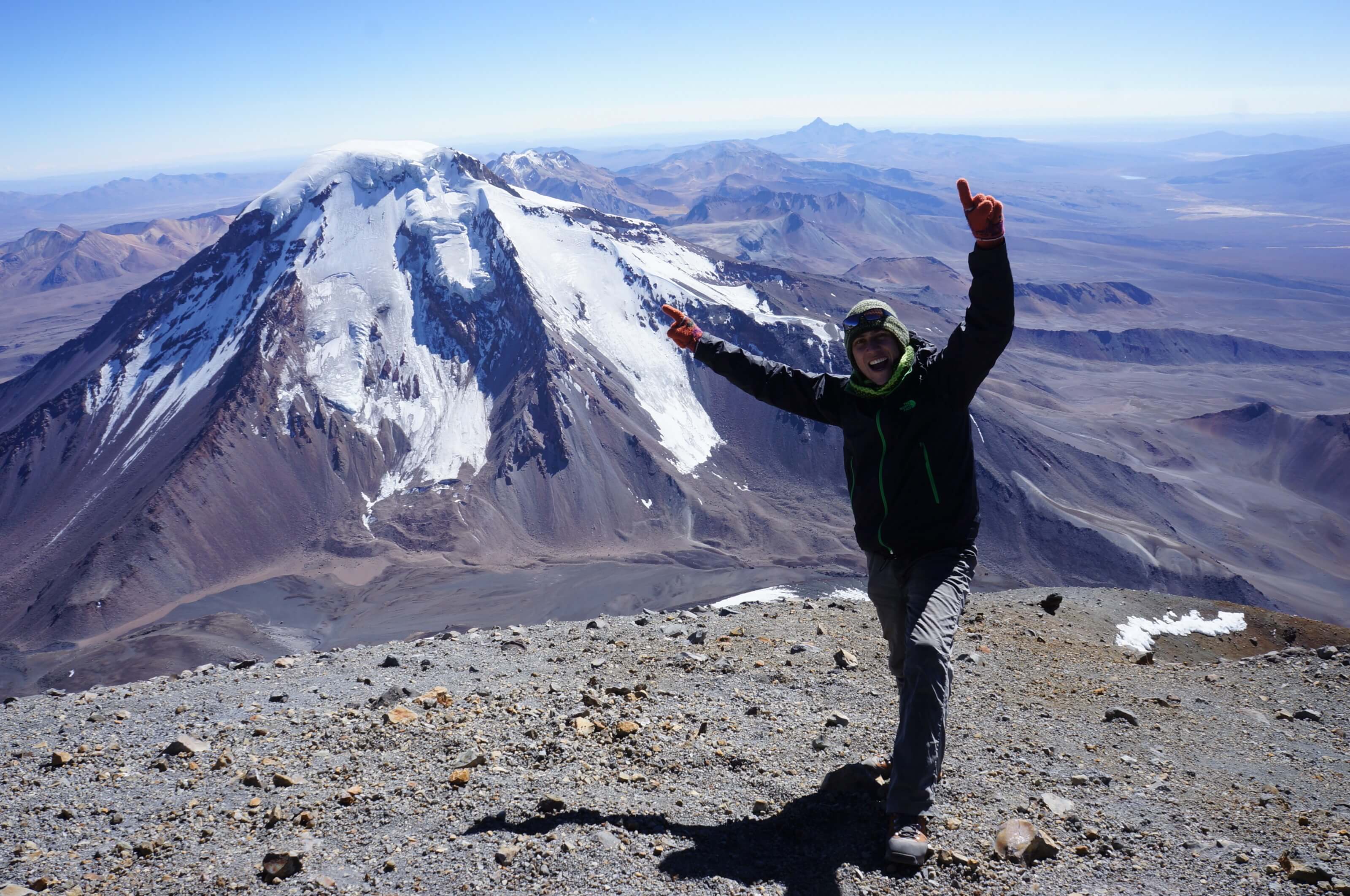
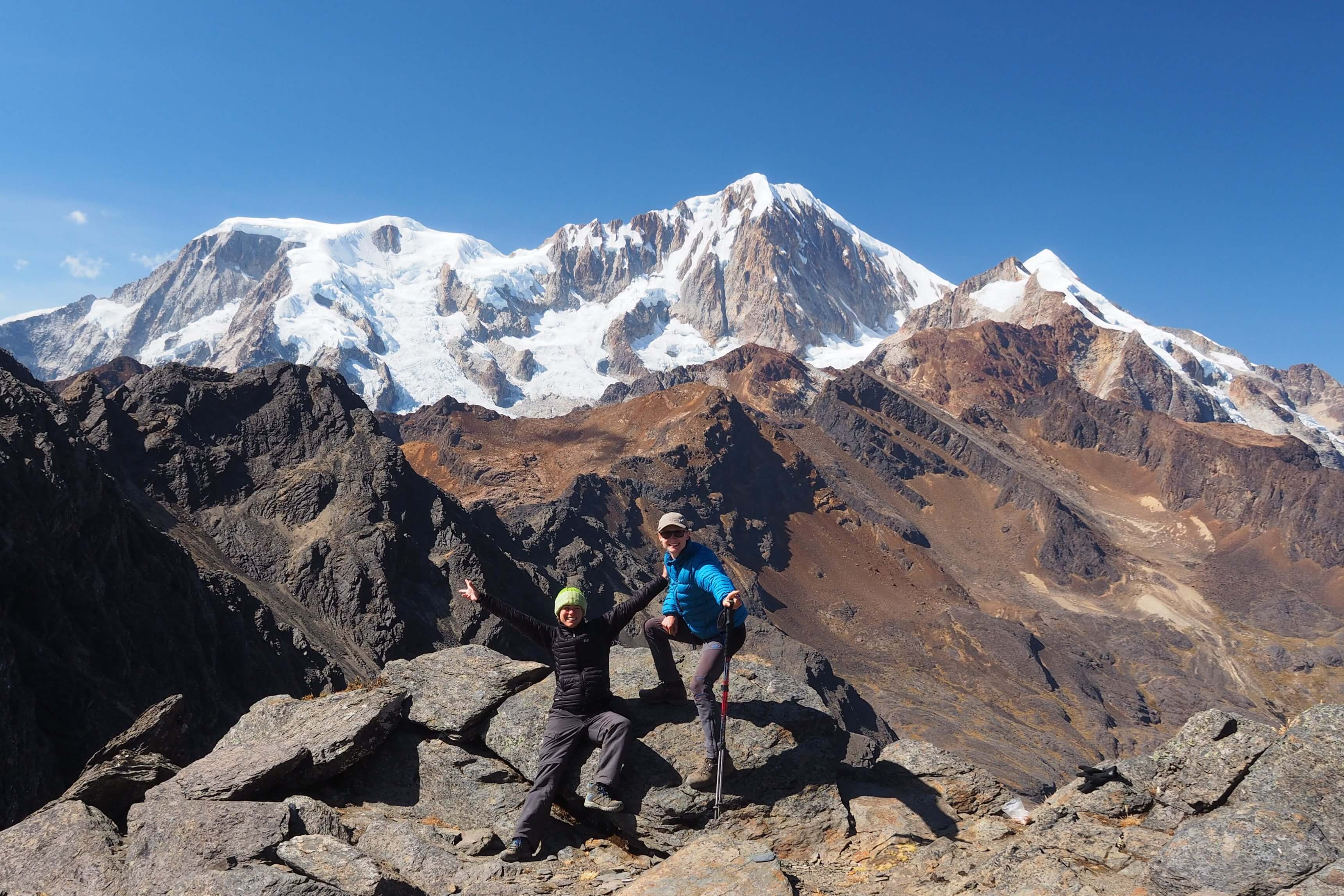
Join the discussion